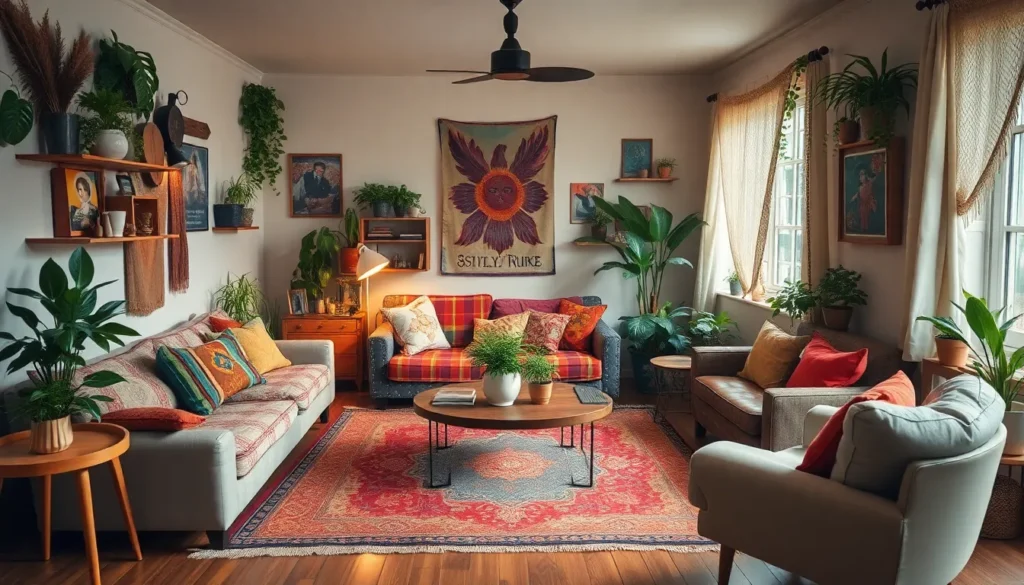When it comes to big living rooms, the vastness can often feel overwhelming. You might find yourself looking at the empty spaces and wondering how to create a warm and inviting atmosphere. That’s why I gathered over 30 creative ideas that help transform large areas into cozy havens. Making your living room feel welcoming is possible, even with an expansive square footage.
If you’re someone who loves home decor and wants to bring a bohemian flair to your spacious living area, this post is tailored for you. Whether you’re a seasoned decorator or just starting out, you’ll find inspiration that resonates with your style. Everyone deserves a space that feels both stylish and snug, right?
In this post, you’ll discover a variety of actionable tips and tricks for designing a big living room that doesn’t just look good but feels good too. From layering rugs for texture to creating cozy nooks with floor cushions, each idea is designed to spark your creativity. You’ll learn how to choose warm color palettes and comfortable furniture arrangements that invite relaxation and conversation. By the end, you’ll have a treasure trove of concepts to help you turn your spacious area into a comforting and welcoming retreat.
Let’s dive in and explore how to make that big living room not just large, but also full of warmth and charm!
Key Takeaways
– Layer rugs to add texture and define areas within your big living room, making it feel more intimate.
– Incorporate cozy nooks with floor cushions to create inviting spaces for relaxation and socializing.
– Use warm color palettes to enhance the inviting feel of your living room and evoke a sense of comfort.
– Consider mixing vintage and modern furniture to add personality and character to your large space.
– Emphasize natural light with strategic furniture arrangements to enhance the room’s overall ambiance.
1. Layered Rugs for Texture
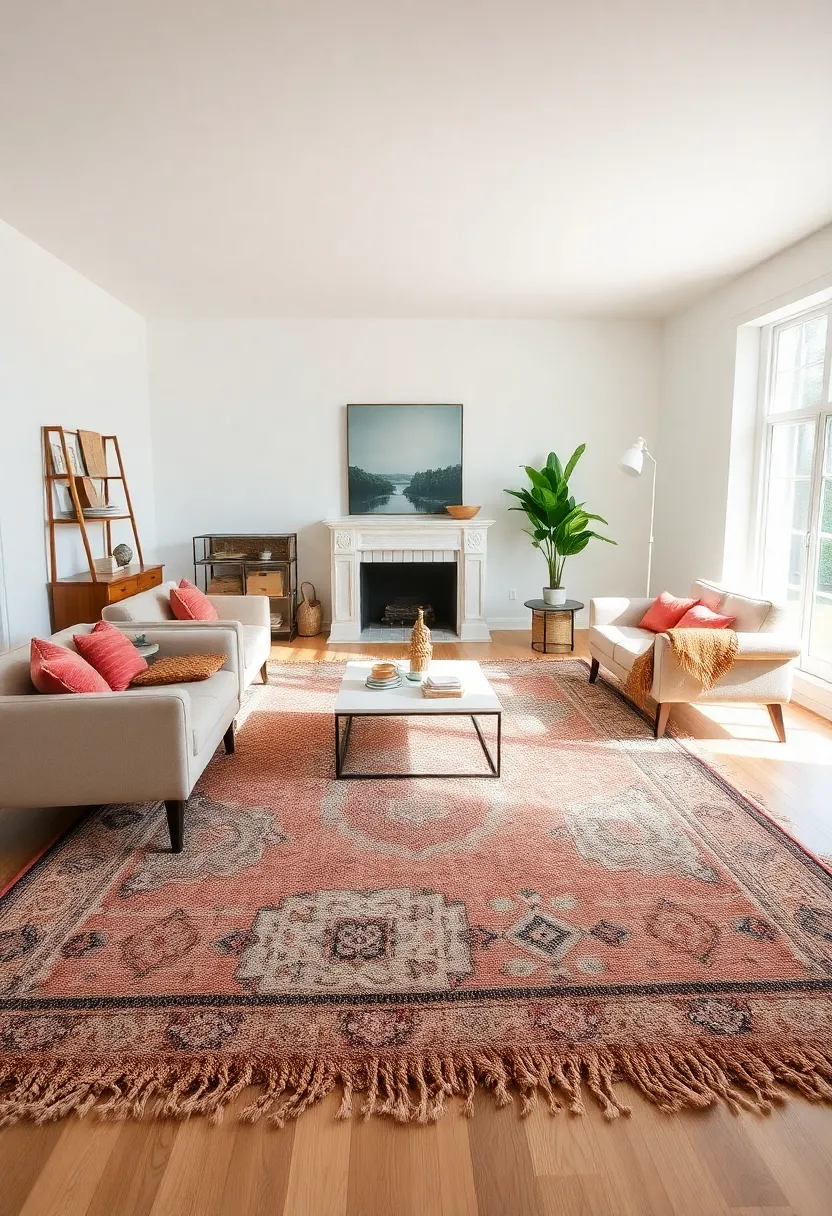
Layered rugs can instantly warm up your large living room and add a cozy vibe. Start with a soft, neutral base rug, then layer colorful or patterned rugs on top. This technique not only adds texture but also helps define different areas, making your space feel inviting. Pinterest often showcases these layered looks, inspiring many to create their own unique styles.
To implement layered rugs, focus on affordable options like jute for the base and colorful cotton or wool rugs on top. Mixing materials is key; it enhances the sense of comfort while keeping it budget-friendly. Remember to choose designs that complement your existing color scheme, creating a harmonious look. With the right rugs, you will transform your living room into a warm and welcoming haven.
• Use a neutral base rug for a cozy foundation.
• Layer colorful patterned rugs on top for texture.
• Choose affordable materials like jute or cotton.
• Mix shapes and sizes for a unique design.
Layered rugs can redefine your space, making it feel inviting and warm.
Layered Rugs for Texture
Editor’s Choice

Washable Area Rug 8×10, Large Soft Rugs for Living Room Vintage Beige Ca…
 Amazon$89.98
Amazon$89.98
Lahome Modern Abstract Washable 5×7 Area Rugs for Living Room, Colorful …
 Amazon$47.99
Amazon$47.99
FRELISH DECOR Handwoven Jute Area Rug – 3×5 Feet Natural Yarn – Rustic V…
 Amazon$44.99
Amazon$44.992. Cozy Nooks with Floor Cushions

Creating cozy nooks in your large living room invites relaxation and encourages lounging. Large floor cushions or poufs can provide comfy seating, making the space feel more intimate and welcoming. Place these cushions near windows or in corners, creating perfect spots for reading or enjoying a drink. As seen in many cozy homes, adding vibrant, patterned blankets can enhance the inviting atmosphere.
To set up your cozy nook, consider different cushion sizes and shapes for added depth. Bright colors can liven up the space and create a cheerful vibe. Don’t forget a small side table for drinks or books, making it functional and stylish. These nooks will be perfect for unwinding, ensuring your living room feels like a warm retreat.
• Incorporate various cushion sizes for depth.
• Use bright colors to liven up the area.
• Create a mini bookshelf for easy access to reads.
• Arrange cushions in corners or by windows for comfort.
Cozy nooks will become favorite spots to relax and enjoy the moment.
Cozy Nooks with Floor Cushions
Editor’s Choice

HIGOGOGO Round Stuffed Pouf Ottoman, Corduroy Poufs with Foam Chunk Fill…
 Amazon$39.99
Amazon$39.99
Furinno Just Turn-N-Tube Open Storage Nightstand, 1 Pack, 3-Tier, White/…
 Amazon$11.11
Amazon$11.11
Furinno LUDER Book Shelf, 3-Cube Bookshelf, Bookcase, 9.3″ x 12″ x 31.5″…
 Amazon$26.44
Amazon$26.443. Hanging Plants for a Lively Touch
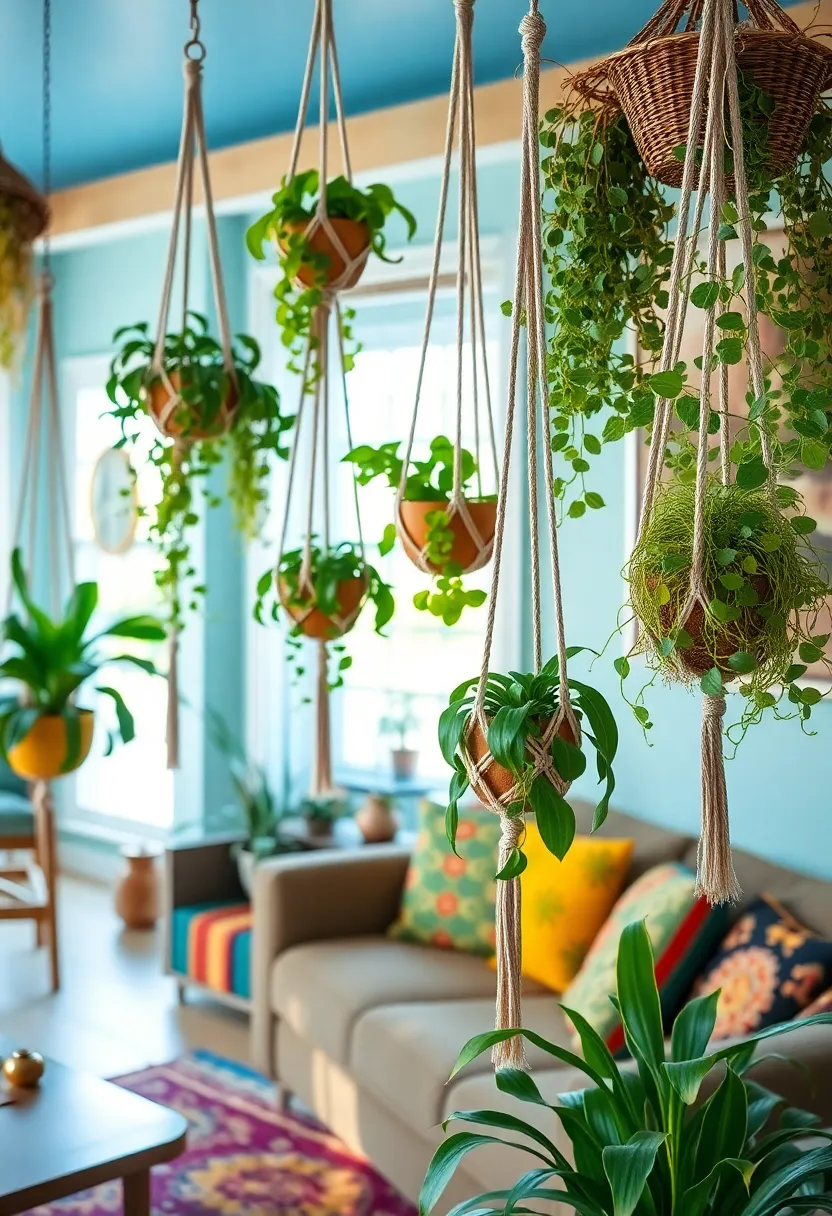
Adding hanging plants to your living room can bring life and warmth without taking up floor space. They’re perfect for corners or near windows, where they can thrive and brighten your space. Consider macramé hangers or stylish pots that fit your bohemian theme, as these are trending in many modern homes.
When decorating with hanging plants, mix different types for varied textures and heights. Low-maintenance plants like pothos or spider plants are excellent choices for easy care. Grouping plants in odd numbers can create a more natural look, enhancing the lively touch of greenery in your room. This addition will improve air quality while making your home feel more inviting.
• Mix different plant types for visual interest.
• Choose low-maintenance options for easy care.
• Group plants in odd numbers for a natural look.
• Use macramé hangers or modern pots for style.
Hanging plants will breathe life into your living room and create a warm, inviting atmosphere.
Hanging Plants for a Lively Touch
Editor’s Choice

MIPON 3 Pack Macrame Plant Hanger Indoor Hanging Planter for Plants Hold…
 Amazon$9.99
Amazon$9.99
Costa Farms Golden Pothos Live Plant, Easy Care Indoor House Plant in Gr…
 Amazon$12.92
Amazon$12.92
Foraineam Set of 7 Colors Self-Watering Hanging Planter Indoor Outdoor G…
 Amazon$23.99
Amazon$23.994. Mix Vintage and Modern Furniture
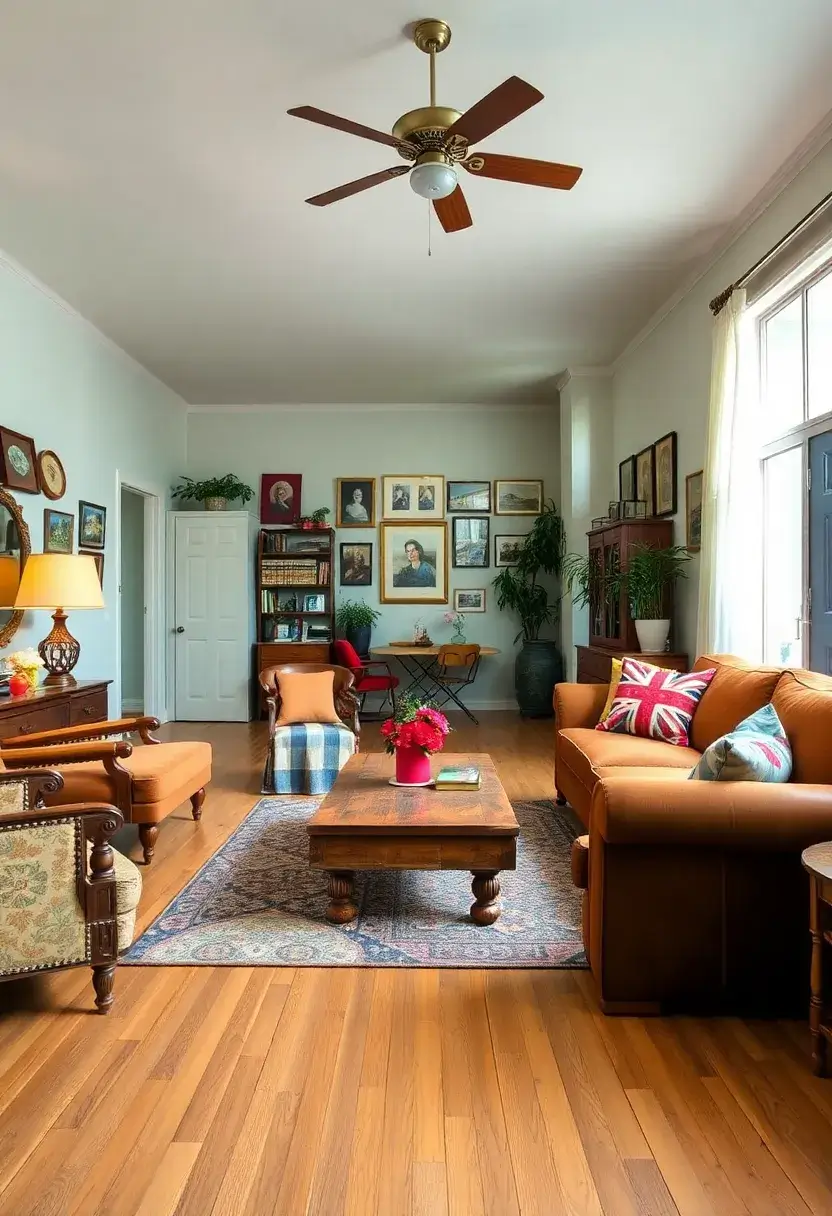
Combining vintage and modern furniture can create an eclectic and inviting atmosphere. In a spacious living room, pairing a contemporary sofa with a vintage coffee table or mid-century chairs adds character and warmth to your space. This blend reflects personal style and makes the room feel lived-in.
When mixing styles, ensure your pieces have a cohesive color scheme to tie everything together. Statement pieces, like bold armchairs, can create focal points that draw the eye. Don’t shy away from accessorizing with unique finds from thrift stores or flea markets, as they enhance the story your space tells. This mix will make your living room feel cozy and uniquely yours.
• Choose a cohesive color scheme for harmony.
• Use statement pieces to create focal points.
• Accessorize with curated thrift finds for personality.
• Pair contemporary sofas with vintage tables for style.
Mixing vintage and modern pieces will make your living room warm and inviting.
Mix Vintage and Modern Furniture
Editor’s Choice

3 Seater Sofa Couch with Deep Seats, 89″ Mid Century Modern Upholstered …
 Amazon$379.99
Amazon$379.99
LEEMTORIG Oval Coffee Table for Living Room, Cherry Solid Wood Coffee Ta…
 Amazon$359.99
Amazon$359.99
Yaheetech Mid-Century Accent Chairs, PU Leather Modern Upholstered Livin…
 Amazon$131.39
Amazon$131.395. Colorful Throw Pillows

Throw pillows are a simple, effective way to introduce color and comfort into your living room. Opt for a mix of patterns and textures that reflect your bohemian style while ensuring they complement each other. Layering pillows in various sizes can create an inviting, cozy seating area.
When choosing pillows, pick colors that enhance your room’s existing palette. Mixing geometric patterns with florals can create a fun contrast that adds depth. Consider using different materials, like velvet or cotton, to enrich the tactile experience. These pillows will not only add comfort but also invite guests to settle in and enjoy your space.
• Choose contrasting colors for a lively impact.
• Mix geometric and floral patterns for fun.
• Use various materials for a rich texture.
• Layer different sizes for depth and comfort.
Colorful throw pillows will transform your living room into a cozy haven.
Colorful Throw Pillows
Editor’s Choice

Set of 2 Comfortable Velvet Throw Pillow Cases Decorative Solid Cushion …
 Amazon$20.99
Amazon$20.99
Topfinel Fall Burnt Orange Decorative Throw Pillows Covers 18×18 Inch Se…
 Amazon$19.99
Amazon$19.996. Warm Color Palettes
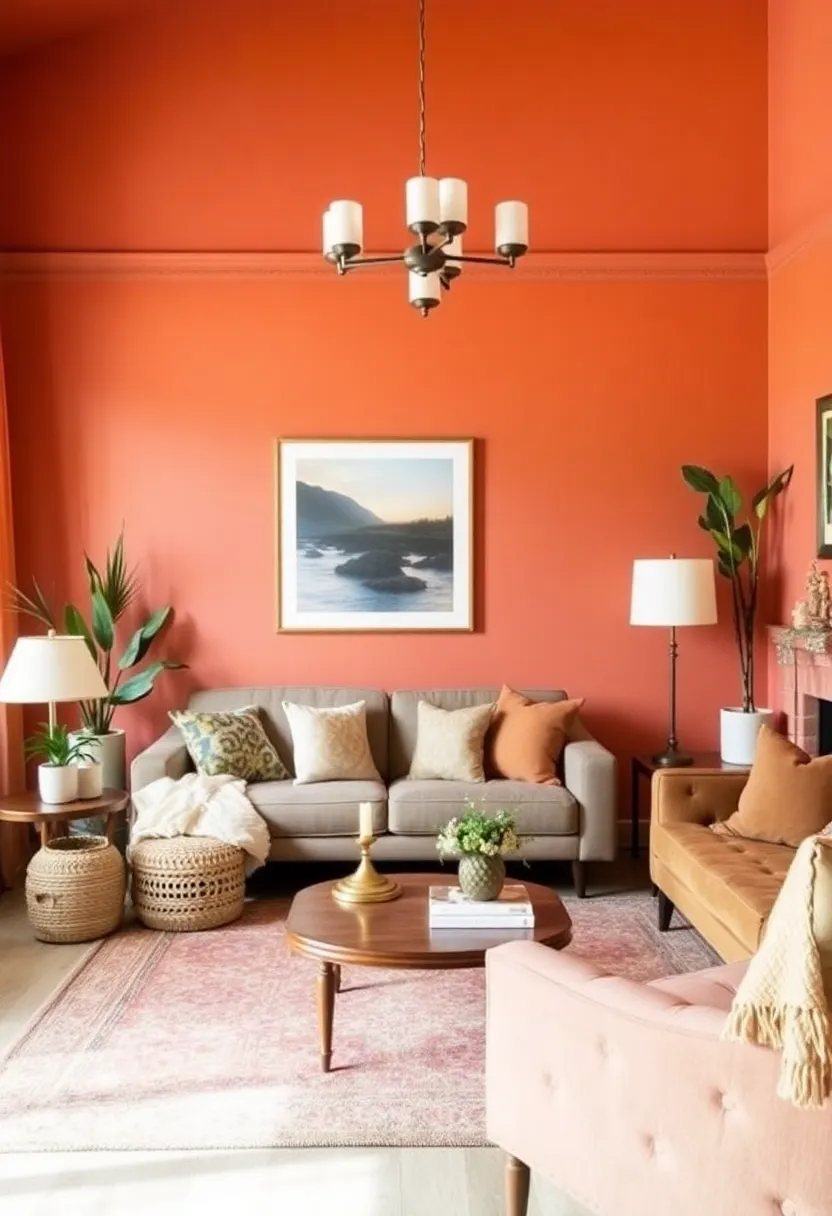
Selecting a warm color palette is key to making your living room feel inviting. Shades like terracotta, deep reds, and golden yellows evoke a cozy atmosphere that welcomes you and your guests. You can incorporate these colors through wall paint, furniture, and decor, creating a harmonious feel in your space.
Start by using paint samples to find shades that resonate with your personality. Balance warm hues with neutrals to keep the room grounded and inviting. Adding accents in complementary colors can keep the space feeling lively and fresh. A thoughtfully chosen color palette will transform any large room into a cozy retreat.
• Use paint samples to find your perfect shade.
• Balance warm hues with neutral tones for grounding.
• Incorporate complementary accents for liveliness.
• Choose deep colors to create warmth.
A warm color palette will create a welcoming atmosphere in your living room.
Warm Color Palettes
Editor’s Choice

Sherwin Williams Colors collection Deck Complete Paint Colors
 Amazon$44.00
Amazon$44.00
Utopia Bedding Throw Pillows (Set of 4, White), 18 x 18 Inches Pillows f…
 Amazon$23.64
Amazon$23.64
XINXUAN Colorful Graffiti Thinker Statue Sculptures-Colorful Decor for H…
 Amazon$19.99
Amazon$19.997. Statement Lighting Fixtures
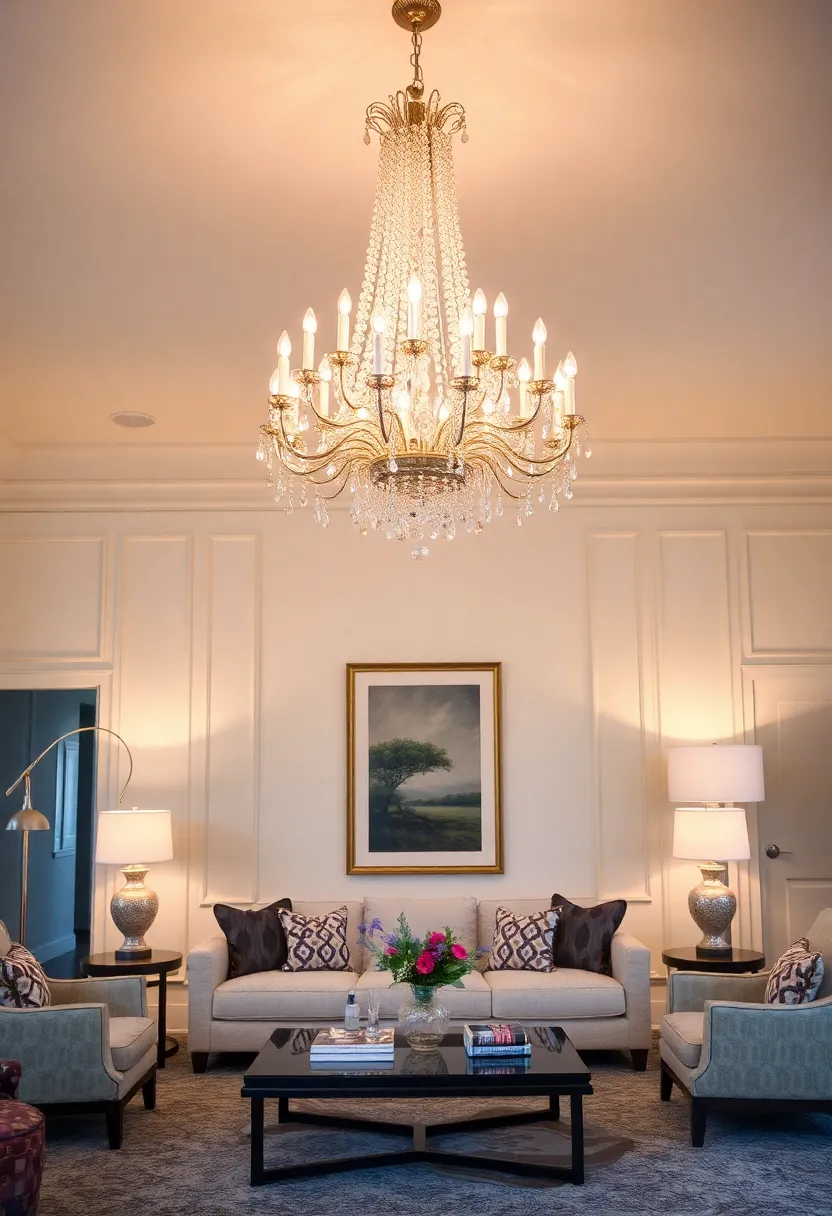
Lighting plays a vital role in setting the mood of your living room. A stunning statement fixture can become a focal point while providing warm, inviting light. Consider large pendant lights or ornate chandeliers that match your bohemian style, as these are perfect for making a statement.
Layer your lighting with floor lamps and table lamps for added depth. When incorporating lighting, use a mix of ambient, task, and accent types to create a warm atmosphere. Choose fixtures with interesting materials or designs to add character to your room. With the right lighting, your large living room can feel warm and inviting, no matter the time of day.
• Layer different types of lighting for depth.
• Choose fixtures with unique designs for character.
• Use warm bulbs to create coziness.
• Consider large pendants for a statement look.
The right lighting can transform your living room into a warm and inviting space.
Statement Lighting Fixtures
Editor’s Choice

Glass Pendant Light Modern Black 1 Light Single Dome Pendant Lighting Fi…
 Amazon$89.99
Amazon$89.99
Dia 28 Inch, Modern Glass Chandeliers for Bedroom, Gold Dining Room Ligh…
 Amazon$232.99
Amazon$232.99
PESRAE Floor Lamp with Table, End Tables with Charging Station(USB & Typ…
 Amazon$47.98
Amazon$47.988. Spacious Bookshelves for Personality
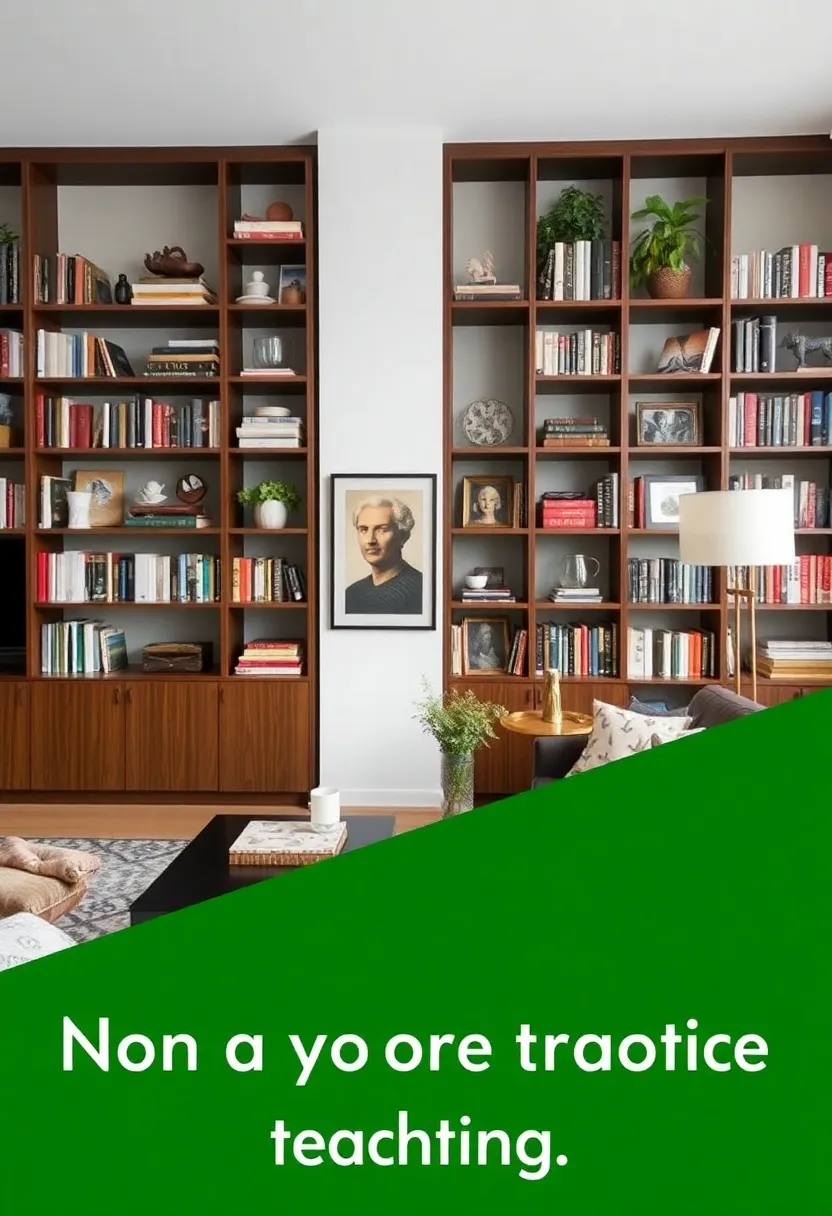
Bookshelves can be more than just a place for books; they tell a story about who you are. In a large living room, use tall, open bookshelves to showcase your favorite reads, art, and decor items. Mixing books with decorative pieces creates a curated look that adds personality to your space.
Organize books by color or size for visual appeal. Personal mementos and plants can make the shelves feel more lived-in and welcoming. Position bookshelves as backdrops for seating areas to create intimacy and warmth. Your bookshelves can be beautiful, functional, and a representation of your unique style.
• Organize books by color or size for visual appeal.
• Incorporate personal mementos for warmth.
• Use shelves as backdrops for seating for intimacy.
• Mix books with decorative pieces for personality.
Bookshelves will enhance the inviting atmosphere of your living room.
Big living rooms deserve shelves with personality. Mix books, art, and plants and group by color or size—it’s an easy way to create a warm, lived-in backdrop. Try these ideas for big living room setups that feel inviting and truly you.
Spacious Bookshelves for Personality
Editor’s Choice

Bookends Decorative Metal Unique Office Desk Bookends Cute Book Ends Rea…
 Amazon$17.99
Amazon$17.99
Costa Farms Live Plants (3 Pack), Easy to Grow Real Indoor Houseplants, …
 Amazon$31.13
Amazon$31.139. Textured Wall Art
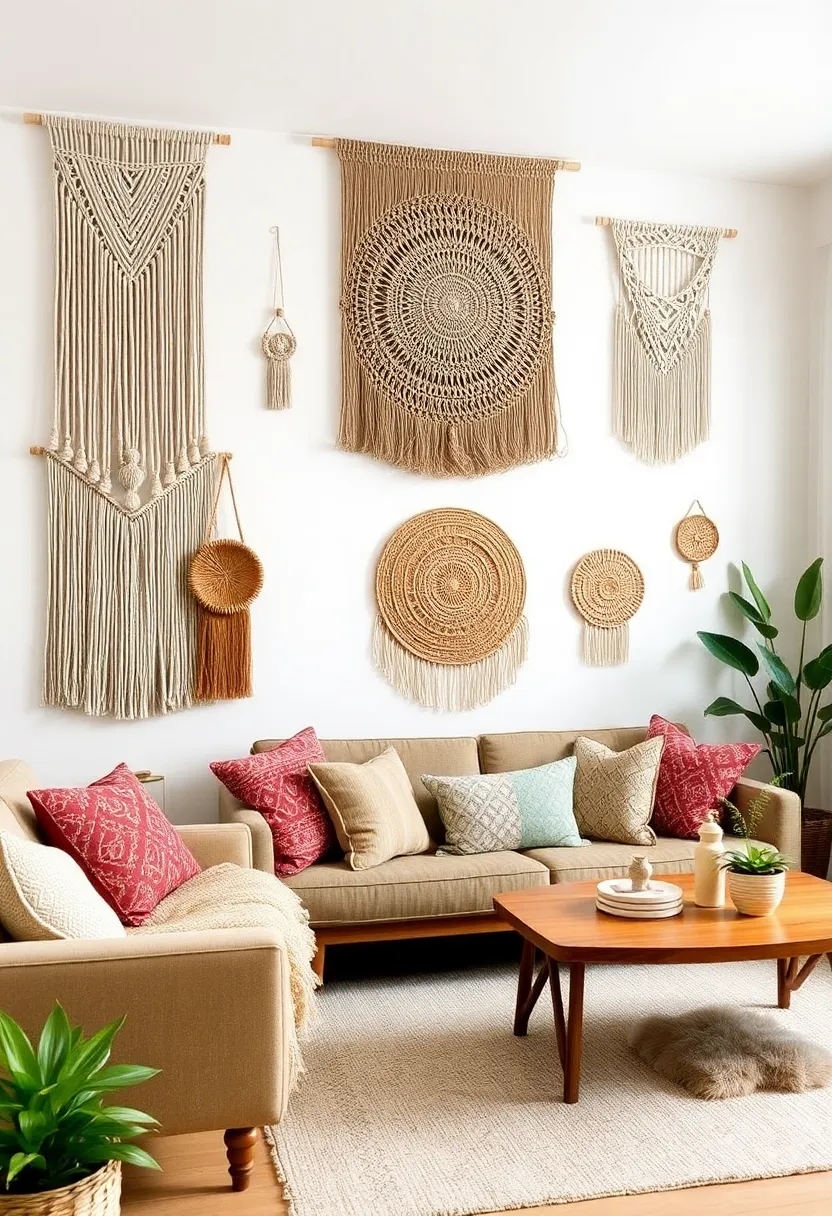
Wall art contributes character and can spark interesting conversations. In a large living room, choose pieces that add warmth and texture. Think about macramé wall hangings, woven tapestries, or canvas prints that show off your style.
Layering different types of art can create depth on your walls. Mixing frames can add visual interest, making the space feel personal and curated. Opt for oversized pieces to fill empty walls without overwhelming the room. Textured wall art can turn blank walls into inviting canvases.
• Use oversized art pieces for impact.
• Incorporate natural materials for a bohemian touch.
• Change your art seasonally for freshness.
• Mix frames for visual interest.
Textured wall art will make your living room feel warm and inviting.
Textured Wall Art
Editor’s Choice

Achart Macrame Wall Hanging Large- Boho Wall Decor- large wall art- Wall…
 Amazon$35.99
Amazon$35.99
Woven Tapestry Wall Hanging – Large Vintage Medieval Renaissance Victori…
 Amazon$34.99
Amazon$34.99
Large Canvases for Painting 36×48 Inch 2-Pack, 12.3 oz Triple Primed Aci…
 Amazon$96.99
Amazon$96.9910. Comfy Seating Arrangements
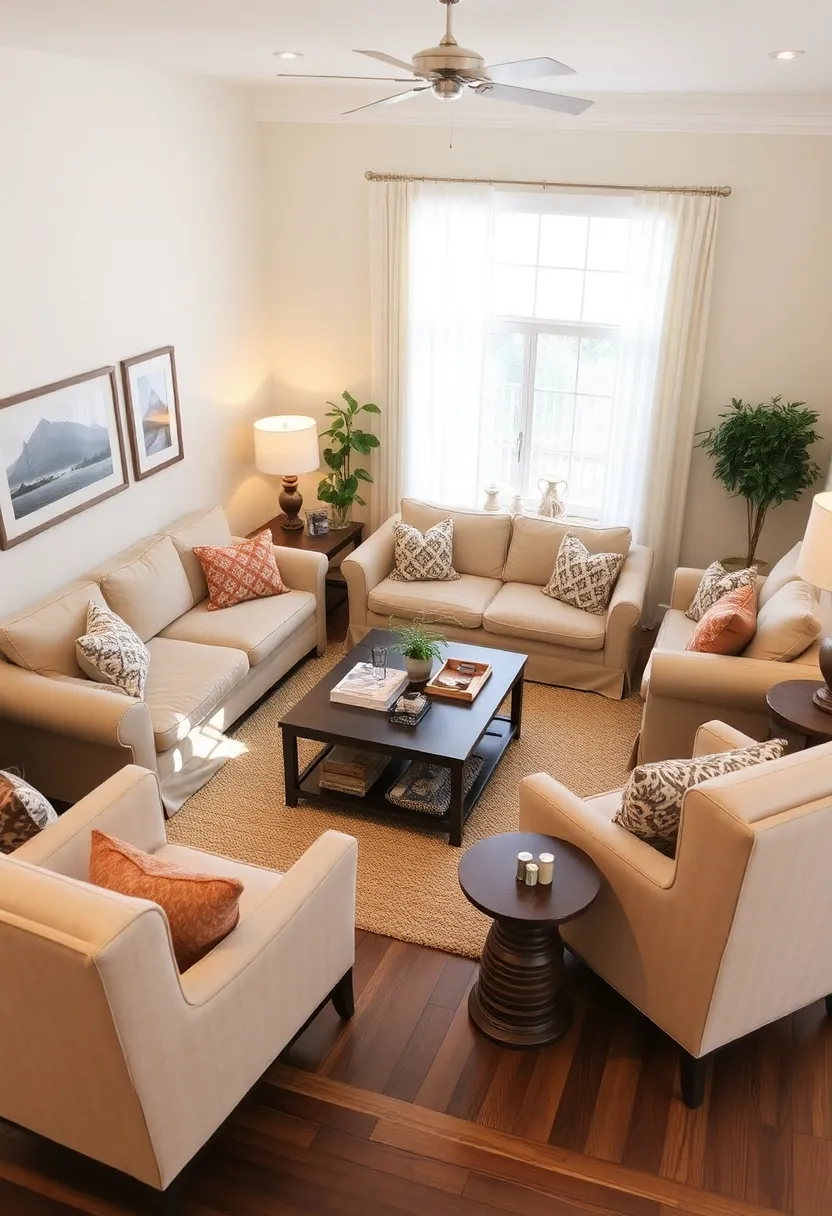
Comfortable seating is essential in creating an inviting living room. In a spacious area, arrange your seating to foster conversation and connection. Group chairs and sofas in an intimate layout, with a coffee table in the center for easy access.
Mix different seating options, like a large sectional and armchairs or floor cushions, to accommodate various preferences. Ensure there’s enough space for movement and flow while keeping it cozy. Adding throws and pillows will enhance comfort and warmth, making it easier for guests to relax.
• Arrange seating for intimacy and conversation.
• Include different seating options for variety.
• Use soft fabrics for comfort.
• Add throws and pillows for coziness.
A well-thought-out seating arrangement will make your living room inviting and enjoyable.
In a big living room, comfy seating isn’t about filling space – it’s about cozy zones. Try a large sectional with armchairs, center a shared coffee table, and layer throws and pillows – simple ideas for big living room that boost warmth and easy conversation.
Comfy Seating Arrangements
Editor’s Choice

108 Inch Sectional Sleeper Sofa with Pull Out Bed,U Shaped 7 Seat Modula…
 Amazon$839.99
Amazon$839.99
Chenille Oversized Armchair, 38.6″ Wide Accent Chairs for Living Room & …
 Amazon$149.99
Amazon$149.99
Utopia Bedding Throw Pillows (Set of 4, White), 18 x 18 Inches Pillows f…
 Amazon$23.64
Amazon$23.6411. Decorative Trays for Organization
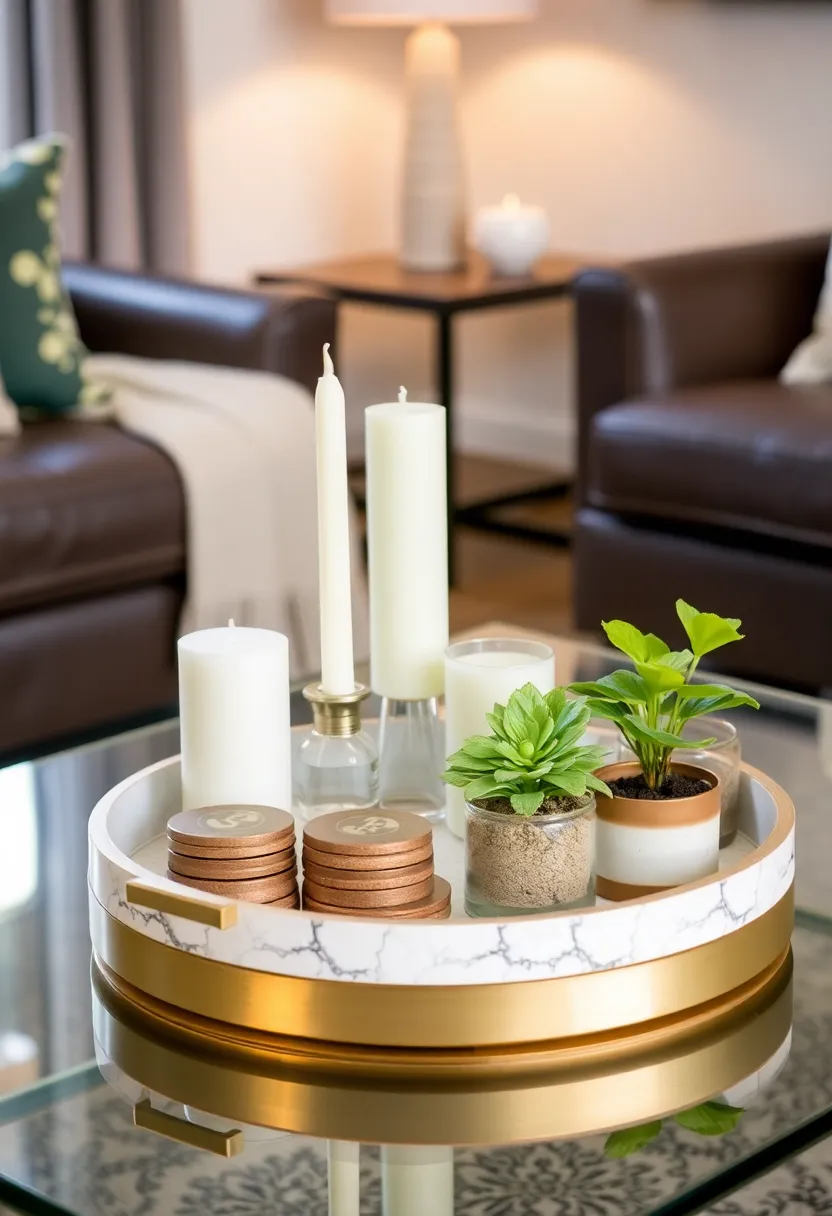
Decorative trays provide a stylish way to organize your living room essentials. Place them on coffee tables or side tables to hold items like remote controls, snacks, or decorative pieces. Using trays helps create a clutter-free environment while adding a touch of style.
Choose trays that reflect your decor style, whether rustic wood or sleek metal. Grouping different items together on a tray can create a curated look that enhances visual appeal. Remember to swap out items seasonally or whenever you want a fresh change. A well-styled tray keeps your space organized and inviting.
• Choose trays that reflect your decor style.
• Group items for a curated look.
• Swap items seasonally for freshness.
• Use trays to hold essentials stylishly.
Decorative trays can enhance the inviting feel of your living room.
If you’re hunting ideas for big living room organization, start with decorative trays. Keep remotes, snacks, and decor on one stylish tray, and change it seasonally to keep your space feeling fresh and organized.
Decorative Trays for Organization
Editor’s Choice

Round Metal Tray with Wooden Handle, Modern Industrial Style, Sleek Rust…
 Amazon$21.99
Amazon$21.99
EspoirLuvRound Decorative Tray Set of 2 – Wooden Coffee Table Trays, Rus…
 Amazon$26.99
Amazon$26.9912. Cozy Fireplaces as Focal Points

If you have a fireplace, make it the centerpiece of your living room. Fireplaces offer warmth and create a cozy atmosphere, perfect for gatherings on chilly nights. Enhance the mantel with decorative items like candles, plants, or art pieces to catch the eye.
Arrange seating around the fireplace to encourage intimate conversations and create a focal point. Consider using natural materials like stone or wood to enhance the bohemian vibe. Adding a rug in front of the fireplace creates an inviting nook for relaxation. A well-designed fireplace can make your large living room feel warm and welcoming.
• Arrange seating to encourage conversation.
• Use natural materials for a cozy vibe.
• Add a rug in front for warmth.
• Decorate the mantel with art and plants.
A cozy fireplace will enhance the inviting nature of your living room.
Cozy Fireplaces as Focal Points
Editor’s Choice
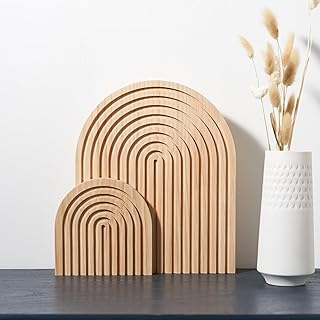
Set of 2 Wooden Arch Boho Decor for Shelf, Fireplace Mantel, Counter, Ta…
 Amazon$22.79
Amazon$22.79
CAMILSON Easy Jute Rug 8×10, Indoor Outdoor Natural Color Fiber Area Rug…
 Amazon$179.90
Amazon$179.90
Ribbed Pillar Candles Set of 3 Width 2.4″ High 5.5″ 7″ 9″ Handmade Scent…
 Amazon$31.99
Amazon$31.9913. Wall-mounted Shelves for Display
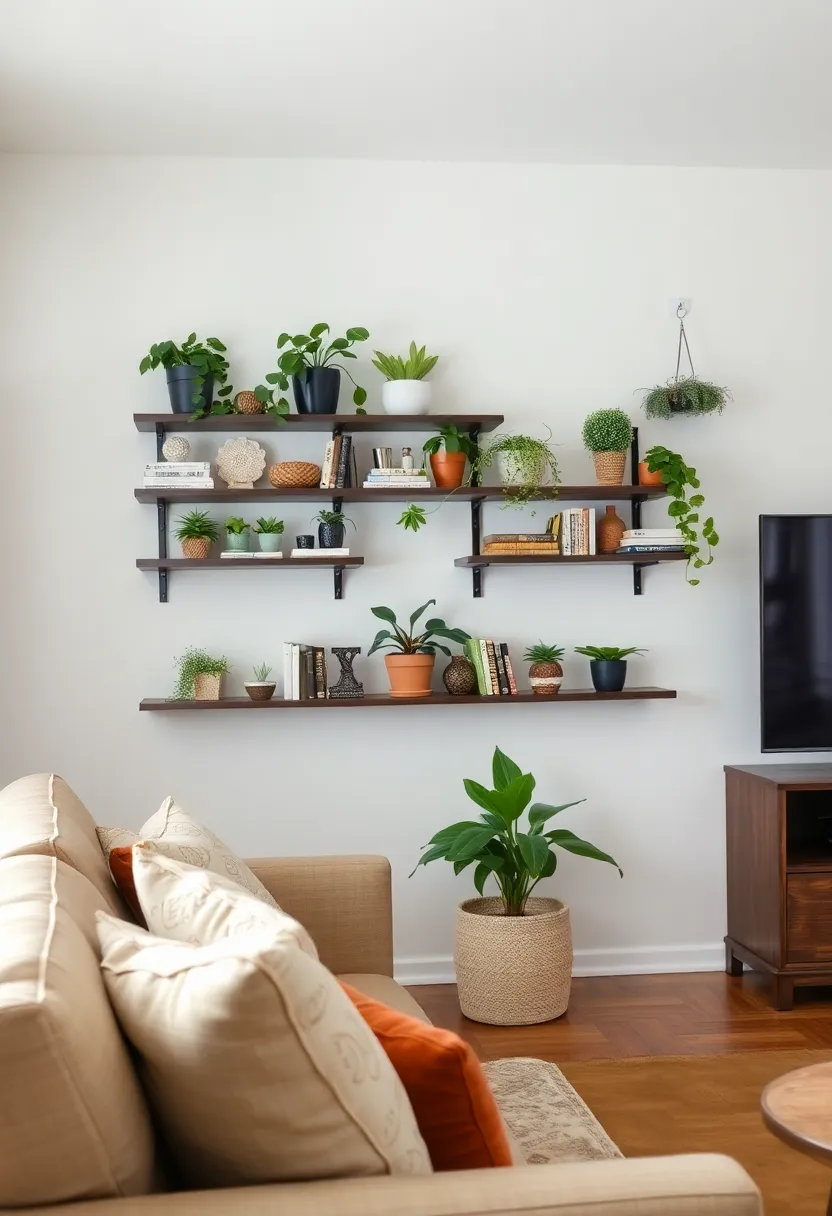
Wall-mounted shelves are a smart way to display decor without taking up valuable floor space. They can showcase plants, books, or fun collectibles while adding visual interest to your walls. Try using several shelves in different heights and lengths for a dynamic look.
Mix up the arrangement by placing larger items on the bottom and smaller ones at the top. Adding personal mementos and plants can create a cozy touch that reflects your personality. Don’t hesitate to change the decor occasionally to keep it fresh and interesting. With the right display, wall-mounted shelves can add charm and warmth to your living room.
• Use shelves in varied heights for interest.
• Place larger items at the bottom for balance.
• Incorporate personal mementos for warmth.
• Change decor occasionally for a fresh look.
Wall-mounted shelves can enhance the cozy vibe of your living room.
Wall-mounted Shelves for Display
Editor’s Choice

BAYKA Floating Shelves for Wall, Wall Mounted Rustic Wood Shelves for Ba…
 Amazon$20.99
Amazon$20.99
Gepege 6 Inch Beaded Ceramic Planter Set of 2 with Drainage Hole and Sau…
 Amazon$19.99
Amazon$19.99
Bookends Decorative Metal Unique Office Desk Bookends Cute Book Ends Rea…
 Amazon$17.99
Amazon$17.9914. Personal Touches with Family Photos

Incorporating family photos into your decor adds warmth and a personal touch to your living room. Use a gallery wall or decorative frames to showcase your favorite memories and experiences. Mixing different frame styles creates an eclectic look that fits your bohemian theme beautifully.
Black and white photos can add a classic touch, while colorful images bring vibrancy. Arrange the frames to tell a story or highlight milestones, making your display more meaningful. Regularly updating your gallery keeps it fresh and engaging. Personal touches like family photos help create an inviting space that truly feels like home.
• Use a gallery wall for family memories.
• Mix different frame styles for interest.
• Arrange photos to tell a story.
• Update regularly for a fresh look.
Family photos will enhance the warmth and personality of your living room.
Personal Touches with Family Photos
Editor’s Choice

eletecpro 12×12 Picture Frames Set of 9 with Mat for 8×8 Photos or witho…
 Amazon$33.08
Amazon$33.08
Geetery 4 Pcs Black Gothic Vintage Picture Frame Set Victorian Antique O…
 Amazon$48.99
Amazon$48.9915. Artistic Centerpieces
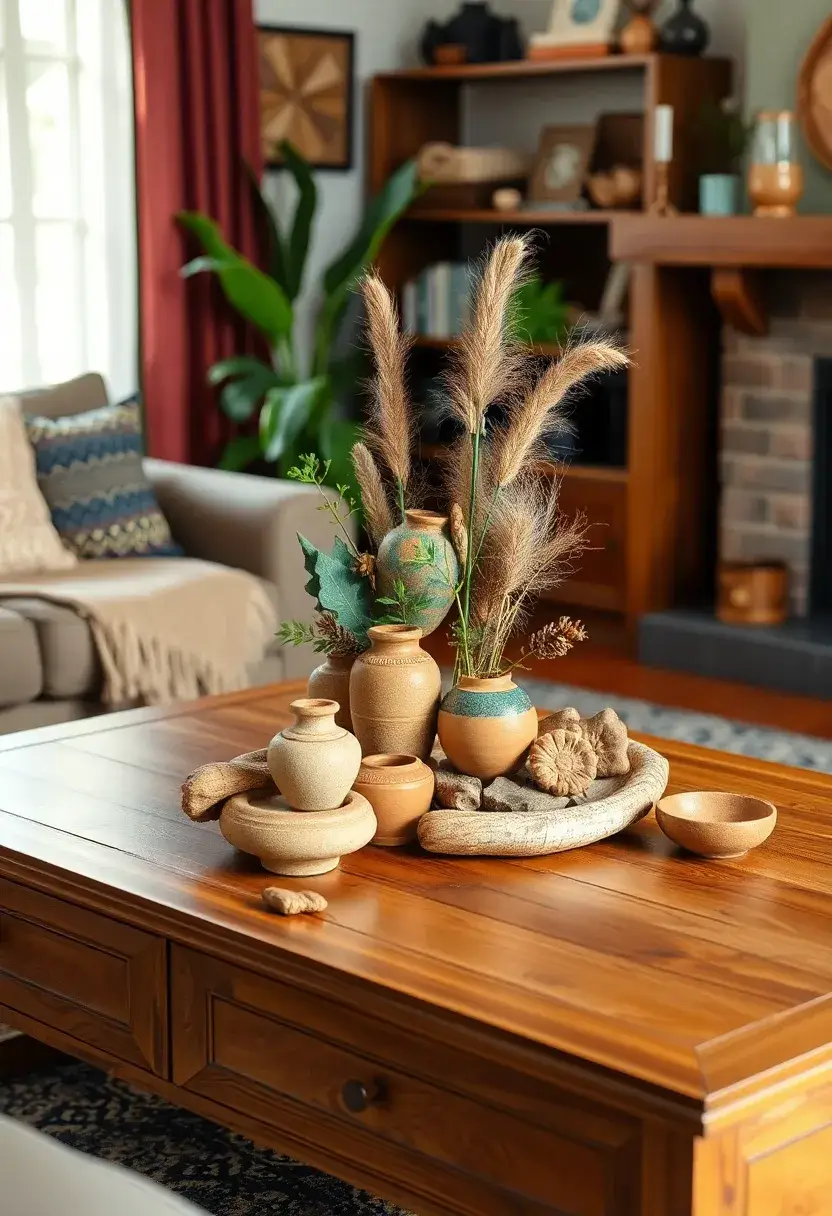
Artistic centerpieces can add intriguing focal points to your living room. Choose unique sculptures, vases, or handmade pottery that reflect your personality and style. These pieces can serve as conversation starters, enhancing the cozy, bohemian vibe of your space.
When selecting centerpieces, opt for items that vary in height and shape to create visual interest. Incorporating natural elements like wood or stone adds warmth to the decor. Be careful not to overcrowd the space; allowing each piece to shine will enhance its impact. Artistic centerpieces can transform your living room into an inviting and stylish retreat.
• Choose items that vary in height and shape.
• Incorporate natural elements for warmth.
• Avoid overcrowding; let each piece shine.
• Use unique designs as statement pieces.
Artistic centerpieces will add character and charm to your living room.
Artistic Centerpieces
Editor’s Choice

3Pcs Graffiti Thinker Statue Accents Reading Women Sculptures, Modern Ae…
 Amazon$24.99
Amazon$24.99
GeLive Brown Ceramic Rustic Vase Jingdezhen Handmade Vintage Pottery Flo…
 Amazon$29.99
Amazon$29.99
Set of 10 Large Wood Slices (11-13”) – Rustic Wooden Rounds for Wedding …
 AmazonCheck Price
AmazonCheck Price16. Stylish Candle Arrangements
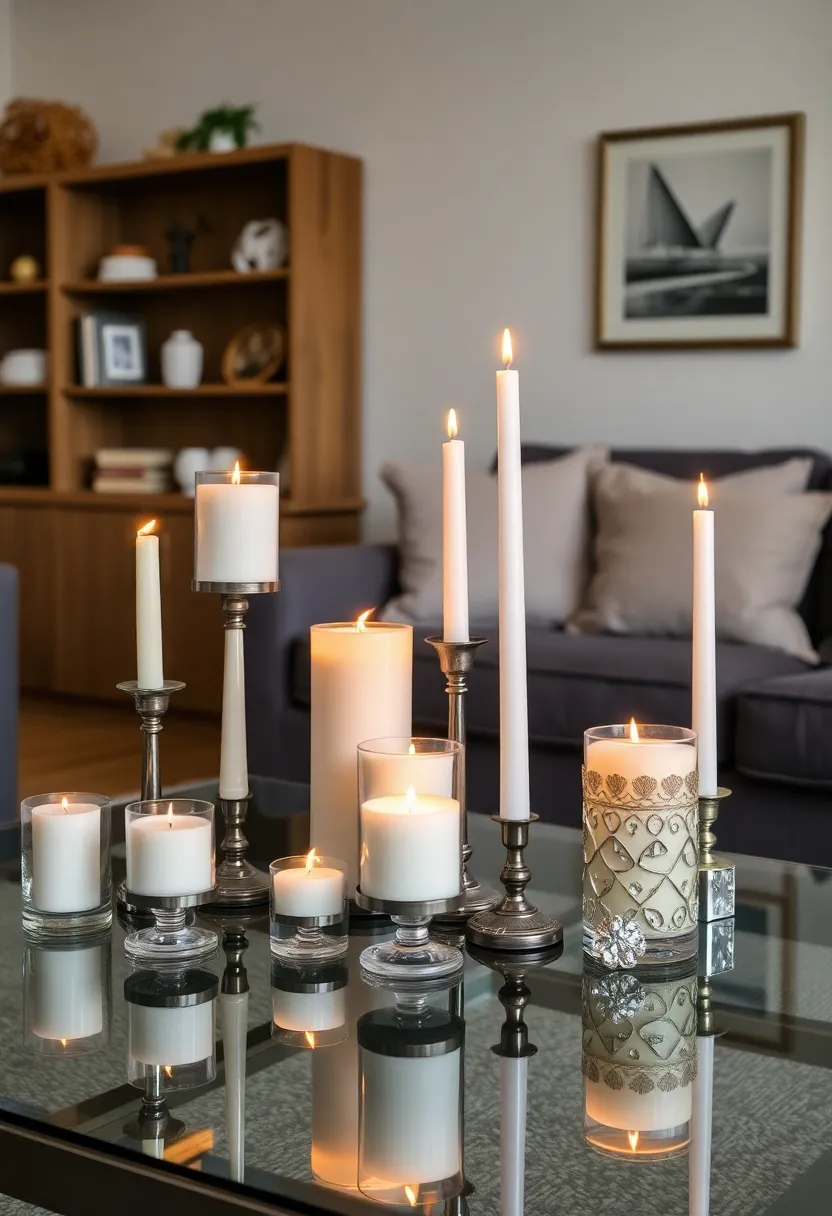
Candles bring warmth and create a serene atmosphere in any living room. Arrange them in groups of varying heights on coffee tables, mantels, or shelves for an inviting display. Scented candles can engage the senses and foster a relaxing environment.
Choose decorative holders that resonate with your style, such as colorful glass or rustic wood. Mixing sizes and shapes adds visual appeal to your arrangements. Always consider safety when using candles—never leave them unattended. Stylish candle arrangements can enhance the warmth and mood of your living room, making it feel cozy and inviting.
• Arrange candles in varying heights.
• Use decorative holders that match your style.
• Mix sizes for visual appeal.
• Ensure candle safety while enjoying.
Candle arrangements will create a warm and inviting atmosphere in your living room.
Stylish Candle Arrangements
Editor’s Choice

Chesapeake Bay Candle Medium Jar Scented Candle Serenity + Calm (Lavende…
 Amazon$14.99
Amazon$14.99
Creative Co-Op 2-Tone Sculptural Terracotta Pillar Candle Holder, Distre…
 Amazon$14.24
Amazon$14.24
Hanobe Rustic Wooden Serving Tray: Round Wood Butler Decorative Tray Vin…
 Amazon$12.99
Amazon$12.9917. Colorful Rattan Baskets for Storage
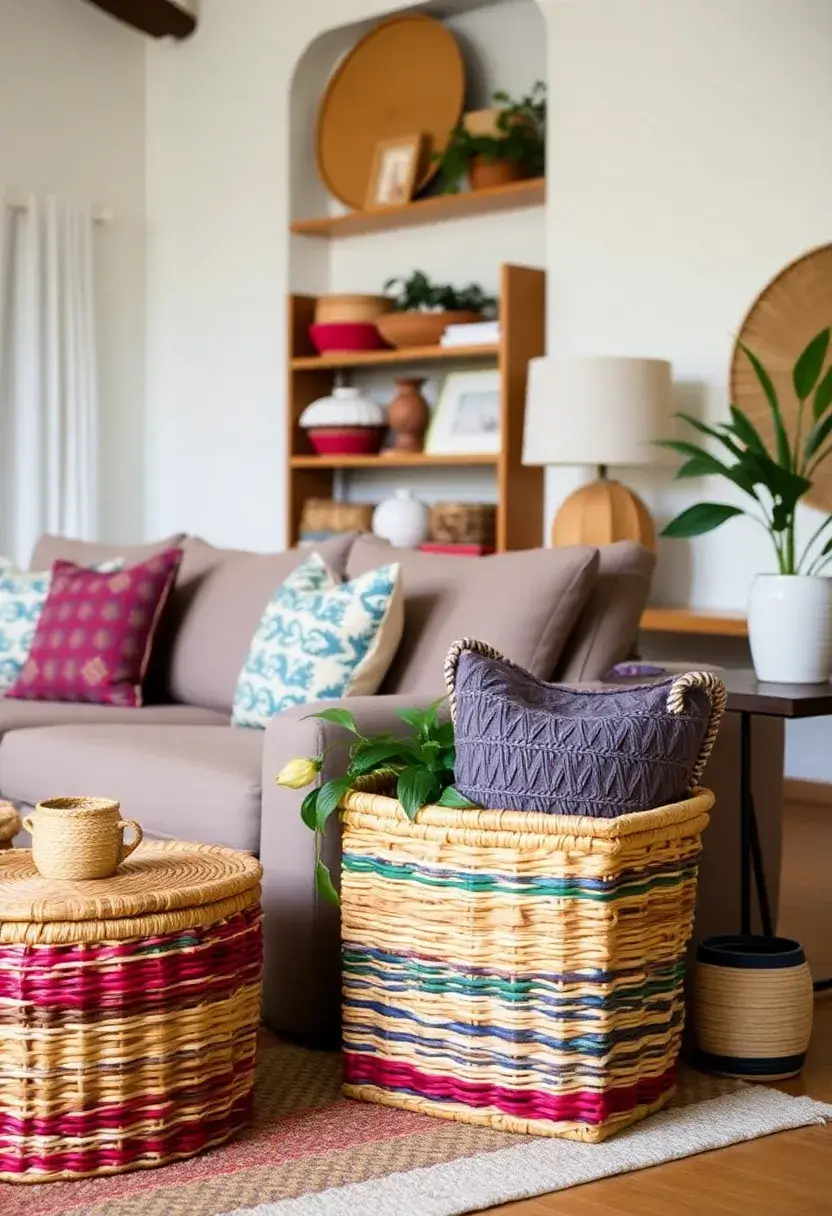
Rattan baskets offer stylish storage solutions that keep your living room tidy. Use them to hold blankets, books, or toys while adding a touch of bohemian charm to your decor. These baskets combine functionality with aesthetic appeal.
Incorporate varying sizes and styles for an eclectic look that enhances your space. Placing baskets in corners or under tables allows for easy access while maintaining a neat appearance. Choose baskets with colorful patterns to add a fun pop to your living room. Rattan baskets can help you keep your space organized and cozy.
• Use varying sizes for an eclectic look.
• Place baskets in corners and under tables for accessibility.
• Choose colorful patterns for a fun touch.
• Use baskets to hold blankets and books.
Rattan baskets will enhance the cozy vibe of your living room while providing stylish storage.
Colorful Rattan Baskets for Storage
Editor’s Choice

ABAO UNCLE Natural Seagrass Belly Basket with Handles – Foldable Tote fo…
 Amazon$21.99
Amazon$21.99
Deco 79 Seagrass Handmade Decorative and Functional Storage Basket Large…
 Amazon$41.80
Amazon$41.80
Marsui 6 Pcs Small Hand Woven Wicker Baskets with Wooden Handles, Seagra…
 Amazon$39.99
Amazon$39.9918. Unique Accent Chairs
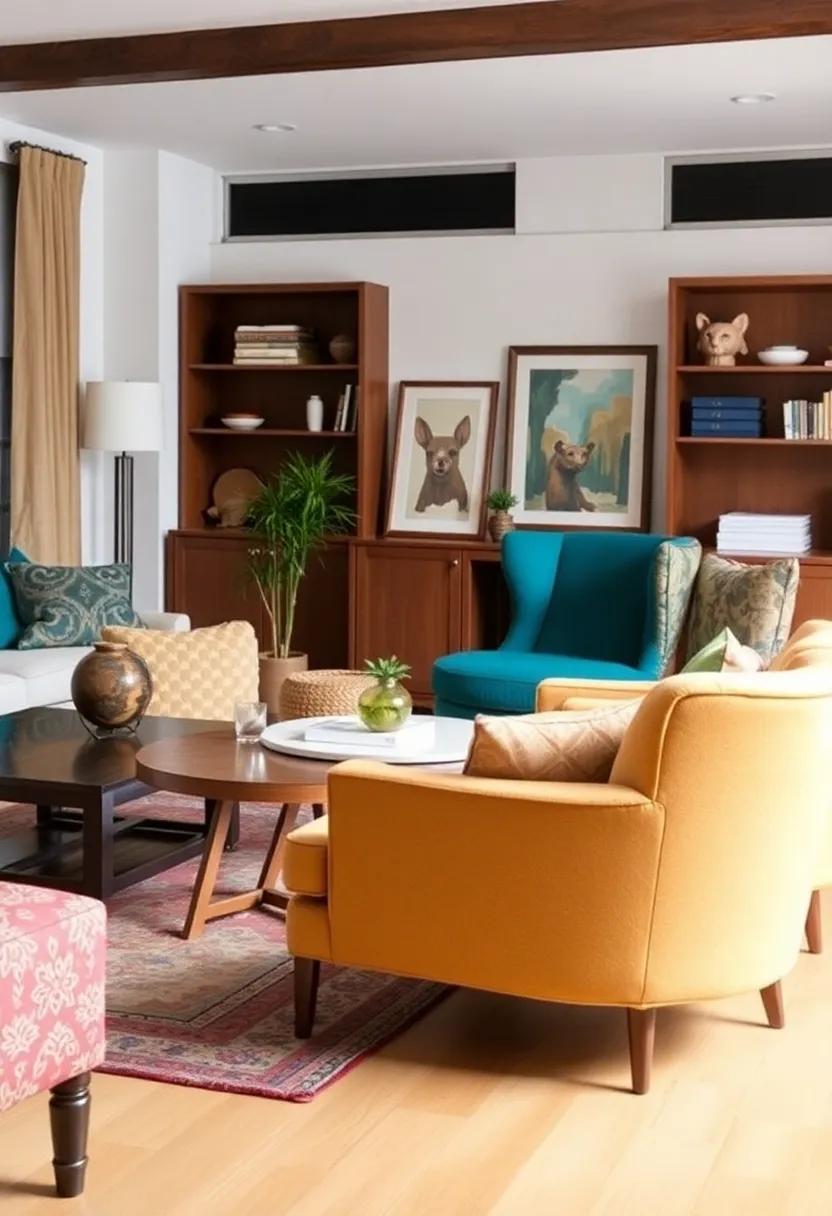
Accent chairs serve as functional seating and striking decor in your living room. Look for unique styles, like vintage armchairs or contemporary designs, to complement your bohemian theme. Scattering these chairs throughout the room adds additional seating and visual interest.
When choosing accent chairs, select colors and patterns that align with your overall decor. Ensure they provide comfort for lounging, as they need to be inviting. Mixing different styles can create an eclectic feel that enhances your living room’s character. Unique accent chairs can make your space feel more inviting and personalized.
• Choose accent chairs that match your decor.
• Ensure they are comfortable for lounging.
• Mix different styles for an eclectic vibe.
• Scatter chairs for additional seating.
Unique accent chairs will enhance the inviting atmosphere of your living room.
Unique Accent Chairs
Editor’s Choice

Yaheetech PU Leather Accent Chair, Mid-Century Modern Armchair with Soli…
 Amazon$89.99
Amazon$89.99
Mid-Century Accent Chair,Modern Linen Fabric Armchair for Living Room,Co…
 Amazon$139.99
Amazon$139.99
Roundhill Furniture Capa Print abric Armless Contemporary Accent Chair, …
 Amazon$88.59
Amazon$88.5919. Cozy Throws for Warmth
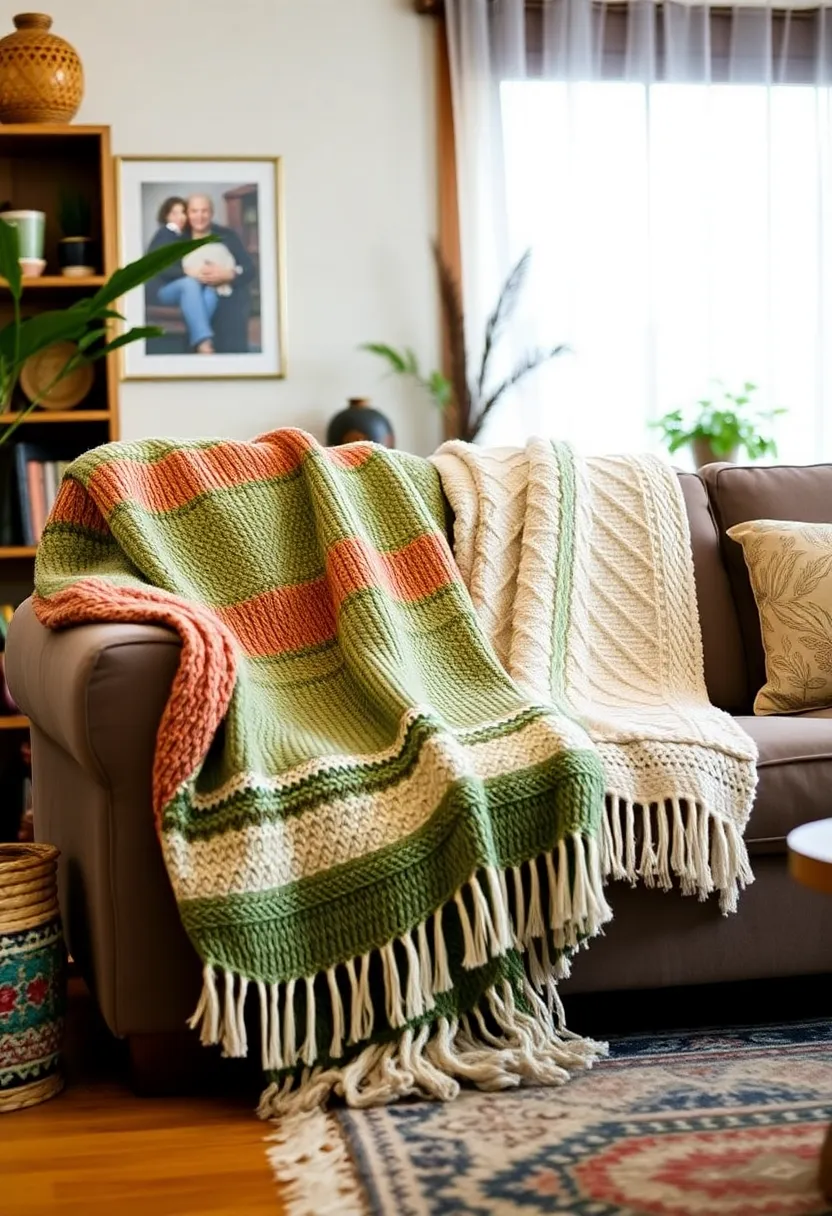
Throw blankets are essential for creating a warm and cozy atmosphere in your living room. Drape them over the back of sofas or chairs for easy access when lounging or entertaining. Choose throws in various textures and colors to enhance the overall warmth of your space.
Mixing chunky knit throws with lightweight options can add depth to your decor. Patterns that complement your existing furnishings will tie everything together nicely. Storing extra throws in decorative baskets keeps them handy while adding style. Cozy throws make your living room the perfect spot for relaxation.
• Drape throws over sofas and chairs for easy access.
• Mix textures and colors for warmth.
• Use decorative baskets for storage.
• Choose patterns that complement your decor.
Cozy throws will enhance your living room’s inviting atmosphere.
Cozy Throws for Warmth
Editor’s Choice

Bigacogo Chunky Knit Throw Blanket for Couch, 40×60 inches, 100% Hand Kn…
 Amazon$37.98
Amazon$37.98
Bedsure GentleSoft Fleece Throw Blanket for Couch Grey – Lightweight Plu…
 Amazon$9.49
Amazon$9.49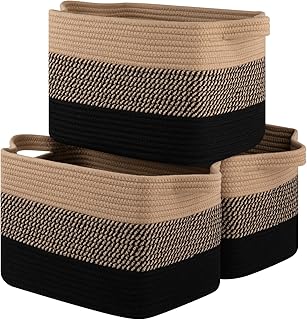
Storage Basket for Organizing, Woven Baskets for Storage, Rectangle Deco…
 Amazon$25.64
Amazon$25.6420. Natural Wood Accents
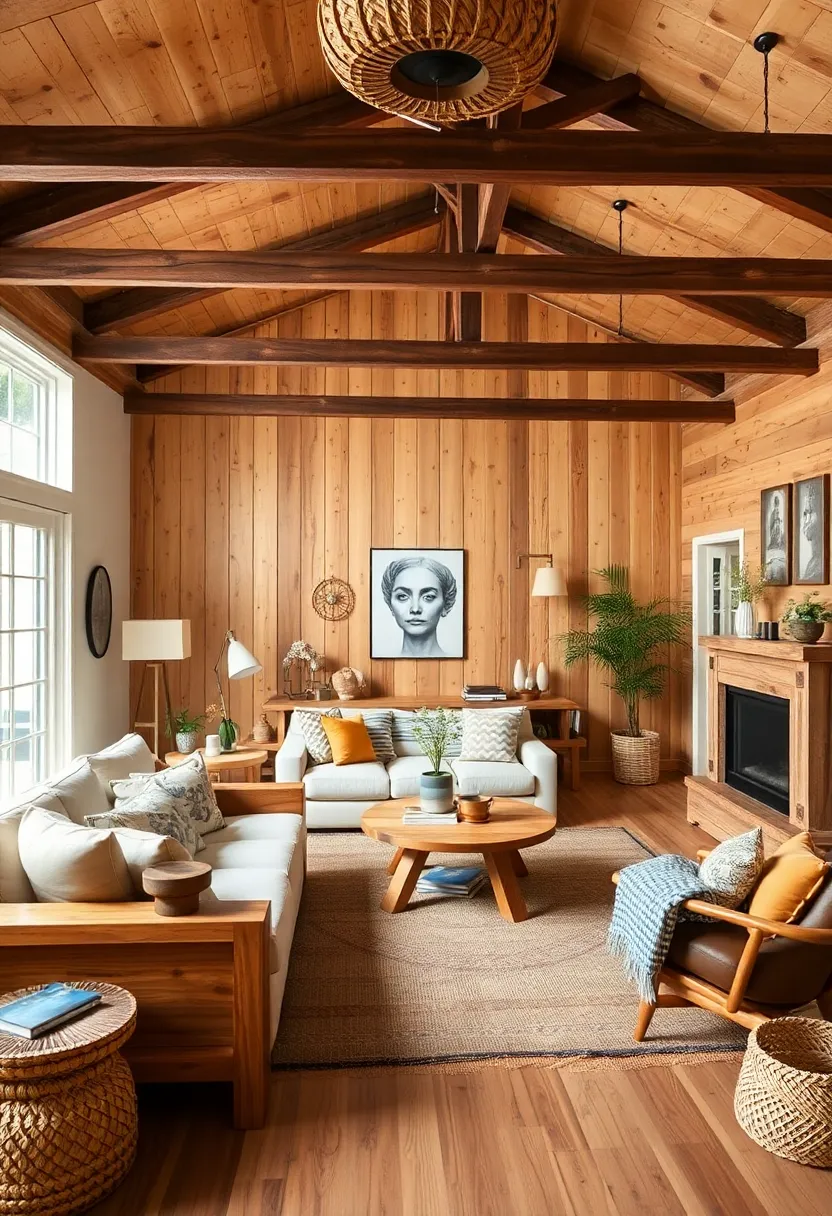
Natural wood accents bring warmth and a rustic feel to your living room. Consider wooden coffee tables, side tables, or shelves that complement your bohemian decor. These pieces create a grounding effect that enhances the inviting nature of your space.
When incorporating wood elements, choose pieces with distinct grains and textures for added character. Mixing different wood finishes can create a layered look that adds depth. Reclaimed wood is a sustainable option that can further enhance your room’s charm. Natural wood accents will make your living room feel cozy and welcoming.
• Choose pieces with distinct grains for character.
• Mix different wood finishes for depth.
• Consider reclaimed wood for sustainability.
• Use wood accents to create a grounding effect.
Natural wood accents will enhance the inviting feel of your living room.
Natural Wood Accents
Editor’s Choice

LITTLE TREE Farmhouse Coffee Table, 47 Inches Wooden Rectangular Accent …
 Amazon$139.99
Amazon$139.99
Round Side Table, Small Drink Table for Small Spaces, Modern Accent Nigh…
 Amazon$39.99
Amazon$39.99
QEEIG Bathroom Floating Shelves for Wall – 15.7″ Wall Mounted Shelf Over…
 Amazon$16.92
Amazon$16.9221. Artistic Throw Blankets

Artistic throw blankets can serve as both functional items and beautiful decor. Look for designs that feature bold colors or intricate patterns that resonate with your bohemian style. Drape these blankets over sofas or chairs for an added layer of comfort and visual interest.
When selecting artistic throws, consider lightweight options for summer and thicker ones for winter. Unique designs can act as statement pieces that enhance your space’s character. Mixing and matching with your existing throw pillows creates a cohesive, inviting look. Artistic throws can elevate the inviting feel of your living room while adding personality.
• Choose lightweight throws for summer and thicker ones for winter.
• Look for unique designs as statement pieces.
• Mix with existing throw pillows for cohesion.
• Drape over sofas and chairs for warmth.
Artistic throws will enhance the cozy atmosphere of your living room.
Artistic Throw Blankets
Editor’s Choice

Neasow Floral Fleece Throw Blanket, Vibrant Color Boho Flowers Blossom C…
 Amazon$19.99
Amazon$19.99
Snuggle Sac Buttery Soft Throw Blanket for Couch, Luxurious Fluffy Cozy …
 Amazon$23.74
Amazon$23.7422. Earthy Color Accents

Using earthy color accents in your living room can create a grounded and warm atmosphere. Incorporate colors like olive green, burnt orange, and terracotta through decor items, cushions, and other textiles. These hues complement your overall bohemian theme while enhancing the inviting feel.
Use wall art or textiles in earthy tones for subtle warmth that ties your room together. Incorporating plants that resonate with these colors, such as succulents, adds to the cozy vibe. Mixing different textures will create depth and interest in your space. Earthy accents can make your living room feel cozy and inviting.
• Use earthy tones for warmth in decor.
• Incorporate plants for a natural touch.
• Mix different textures for depth.
• Use wall art in earthy tones for visual appeal.
Earthy color accents will enhance the warmth and inviting nature of your living room.
Earthy Color Accents
Editor’s Choice

MIULEE Pack of 4 Decorative Throw Pillow Covers 18×18 Inch Brown Green C…
 Amazon$32.99
Amazon$32.99
SHACOS Soft Cozy Fluffy Arch Pattern High-Low Pile Textured Area Rug 5’3…
 Amazon$69.99
Amazon$69.9923. Comfy Ottoman Seating
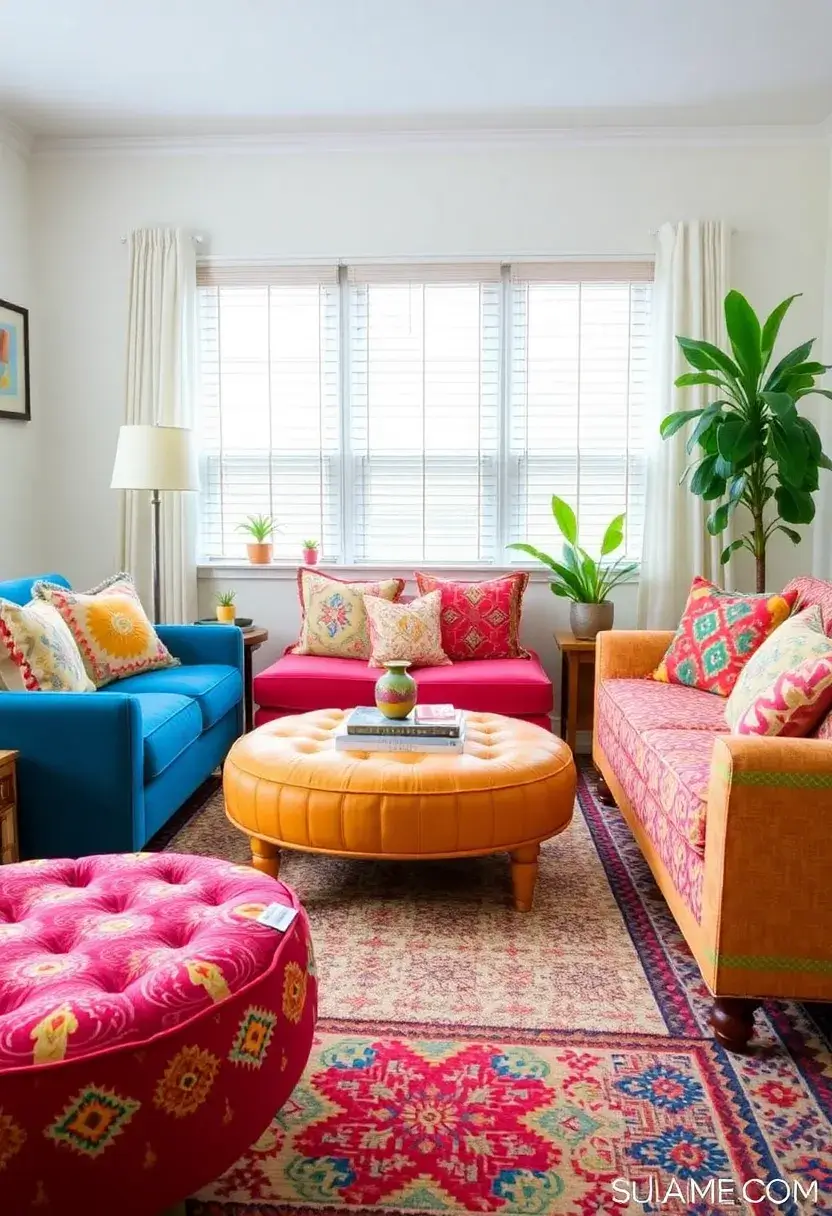
Ottomans add comfort and versatility to your living room. Use them as footrests, extra seating, or even as coffee tables with decorative trays on top. Choosing ottomans in vibrant colors or unique patterns enhances your bohemian design.
When selecting ottomans, find a size that complements your seating arrangement. Mixing materials, such as leather, fabric, or woven options, adds interest to your space. Ottomans with storage capabilities keep your area tidy while providing extra functionality. Comfy ottomans can make your large living room feel more inviting and functional.
• Use ottomans as footrests or extra seating.
• Choose vibrant colors for bohemian flair.
• Mix materials for visual interest.
• Select ottomans with storage options for tidiness.
Comfy ottomans will enhance the inviting nature of your living room.
Comfy Ottoman Seating
Editor’s Choice

SONGMICS MAZIE Collection – 43 Inches Folding Storage Ottoman Bench, Ott…
 Amazon$49.98
Amazon$49.98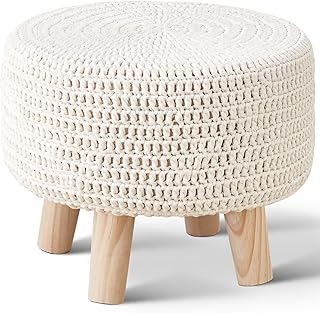
Wimarsbon Pouf Ottoman, 100% Cotton Knitted Boho Footstool, Round Footre…
 Amazon$34.19
Amazon$34.19
Homepop Home Decor | Button Tufted Faux Leather Round Storage Ottoman | …
 Amazon$95.99
Amazon$95.9924. Vibrant Curtains for Softness
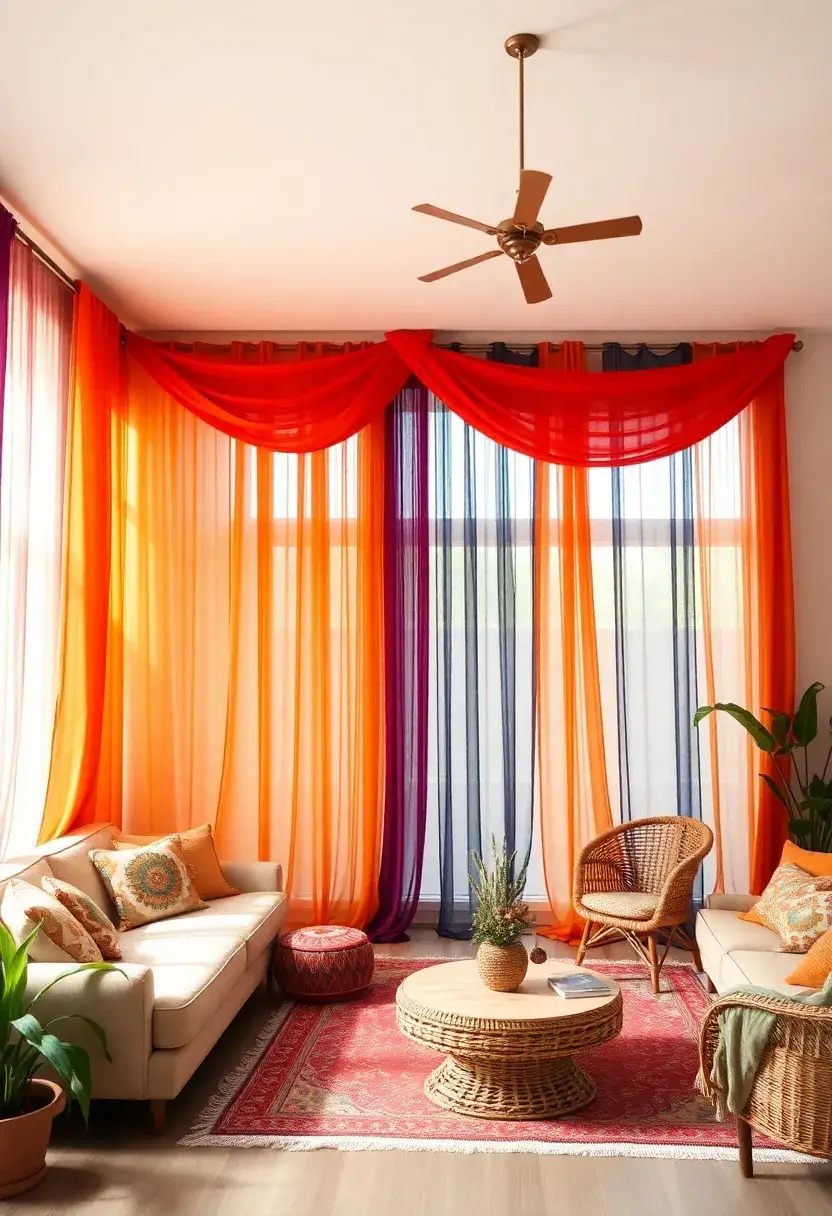
Curtains play an essential role in softening the look of a living room, especially in large spaces. Choose vibrant, flowing curtains that complement your color palette while providing privacy and light control. Lightweight fabrics like cotton and linen enhance the airy feel of your bohemian decor.
Opt for floor-length styles to create a sense of height and elegance in the room. Bold colors or patterns can create a focal point that draws the eye. Layering sheer and heavier curtains offers versatility in light control and style. Vibrant curtains can make your living room cozier while adding a pop of color.
• Choose floor-length curtains for height.
• Use bold colors for a focal point.
• Layer sheer and heavier curtains for versatility.
• Opt for lightweight fabrics for an airy feel.
Vibrant curtains will enhance the warm and inviting atmosphere of your living room.
Vibrant Curtains for Softness
Editor’s Choice

MIULEE 2 Panels Back Tab Blackout Curtains 96 Inch Long for Living Room …
 Amazon$23.99
Amazon$23.99
OWENIE Sheer Curtains 84 inches Long 2 Panels Set for Living Room/Bedroo…
 Amazon$7.93
Amazon$7.93
Black Boho Floral 100% Blackout Curtains for Bedroom 84 inch Long 2 Pane…
 Amazon$39.99
Amazon$39.9925. Textured Blankets and Pillows
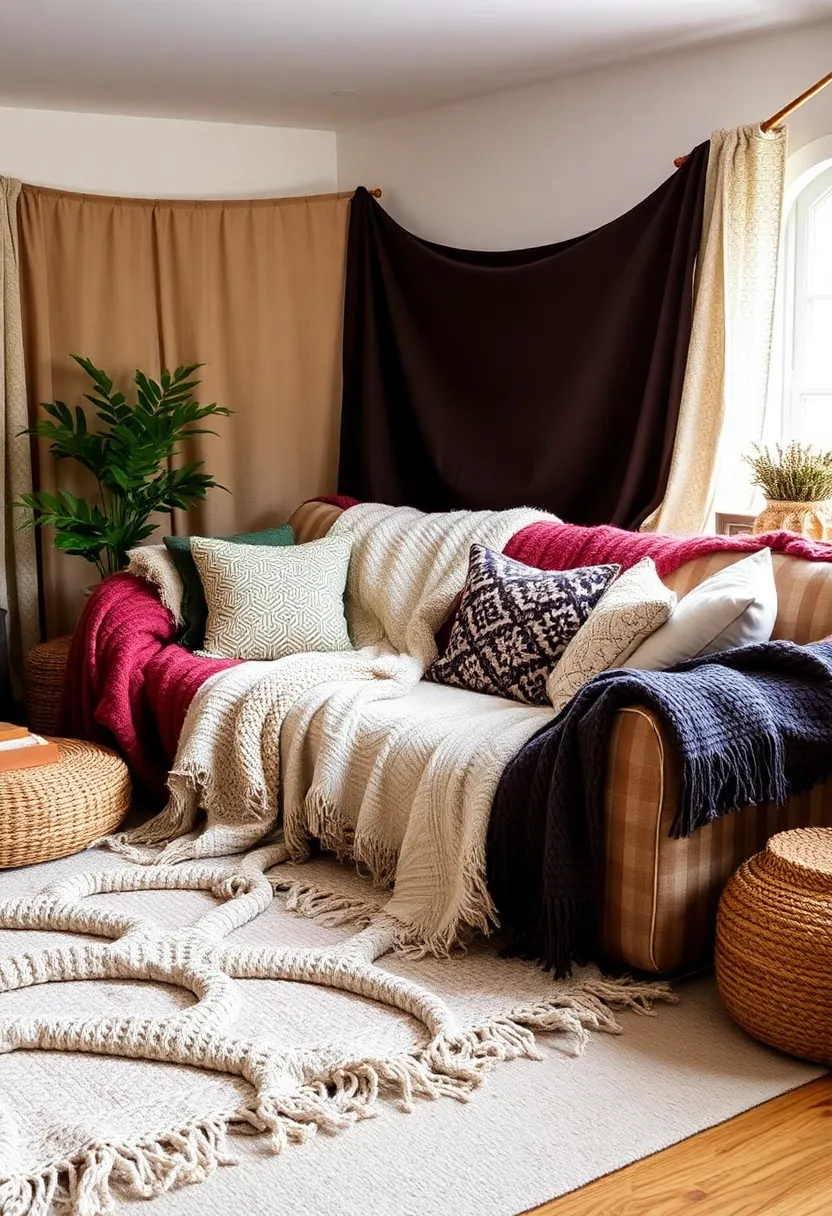
Incorporating textured blankets and pillows is a great way to add layers of comfort to your living room. Choose options with different materials, like chunky knit, woven, or faux fur, to create visual interest and warmth. Layering these textiles on sofas and chairs encourages a cozy atmosphere that welcomes relaxation.
Mixing textures and patterns keeps your arrangement dynamic and appealing. Seasonal textures can bring freshness to your space and enhance the inviting feel. Consider colors that tie back to your overall palette for a cohesive look. Textured blankets and pillows can transform your spacious living room into a cozy retreat.
• Mix textures and patterns for variety.
• Incorporate seasonal textures for freshness.
• Choose colors that match your overall palette.
• Layer blankets and pillows on sofas and chairs.
Textured blankets and pillows will create a warm and inviting atmosphere in your living room.
Textured Blankets and Pillows
Editor’s Choice

L’AGRATY Chunky Knit Blanket Throw,Soft Chenille Yarn Throw 50×60,Handma…
 Amazon$31.34
Amazon$31.34
Phantoscope Pack of 2 Faux Fur Solid Throw Decorative Pillow Cover Cushi…
 Amazon$17.99
Amazon$17.99
Bedsure GentleSoft 100% Cotton Blanket Queen Size for Bed – Breathable a…
 Amazon$32.99
Amazon$32.9926. Whimsical Decor Elements
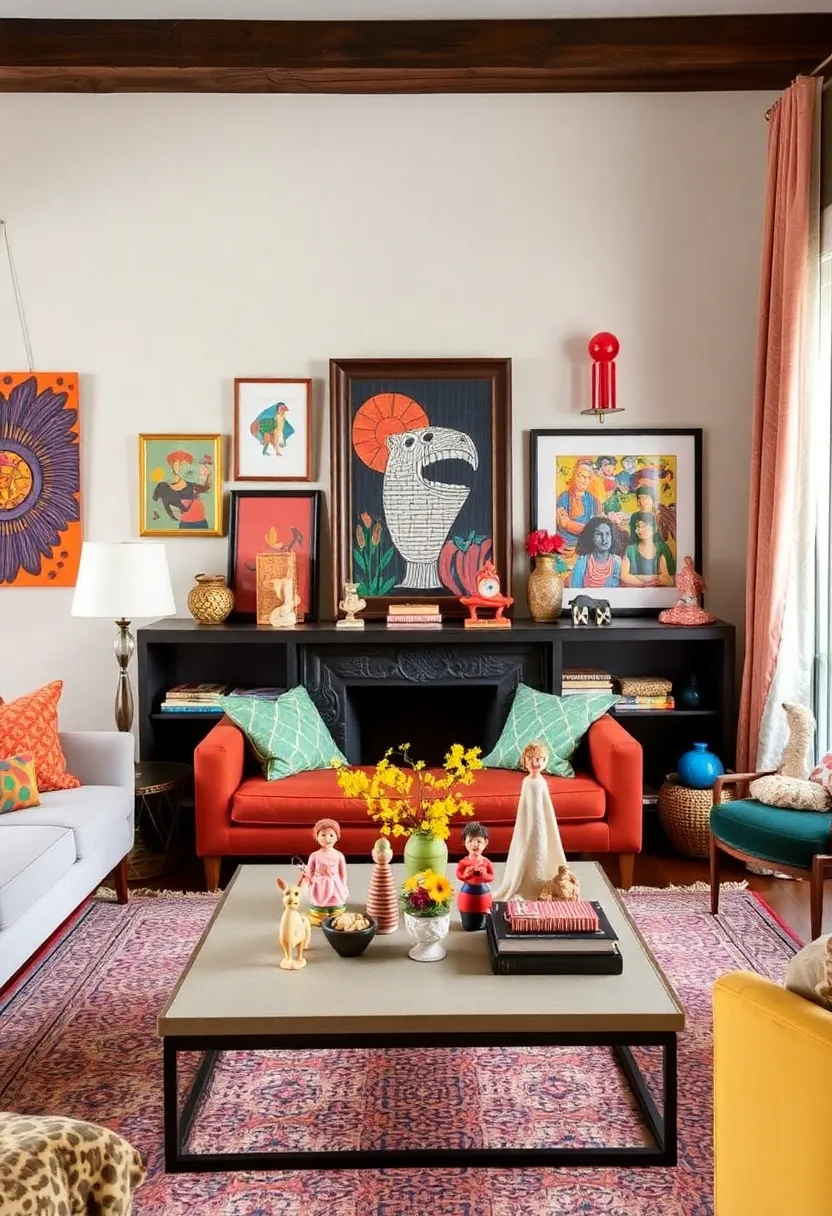
Adding whimsical decor elements can bring a fun, playful touch to your living room. Incorporate quirky art, unusual decor items, or playful patterns to infuse personality into the space. Consider items like colorful wall hangings, unique sculptures, or fun throw pillows that spark joy.
Use unexpected colors and patterns to create a delightful surprise. Select a few standout pieces rather than overwhelming the space. Position them where they can draw attention and create conversation without cluttering the decor. Whimsical decor can enhance the inviting feel of your living room and spark joy.
• Incorporate quirky art for a playful touch.
• Use unexpected colors for a delightful surprise.
• Choose a few standout pieces for focus.
• Position decor to draw attention without clutter.
Whimsical decor elements will make your living room feel joyful and inviting.
Whimsical Decor Elements
Editor’s Choice

2pcs Boho Tassel Garland,Pom Pom Tassel,6.5 Feet Long 20 Balls Ball Garl…
 Amazon$13.49
Amazon$13.49
aboxoo Thinker Statue, Silence is Gold Abstract Art Figurine,Modern Home…
 Amazon$21.99
Amazon$21.99
Sioloc Flower Shaped Pillow Daisy Pillows Floor Cushion Pastel Cute Seat…
 Amazon$18.99
Amazon$18.9927. Warm Wood Flooring
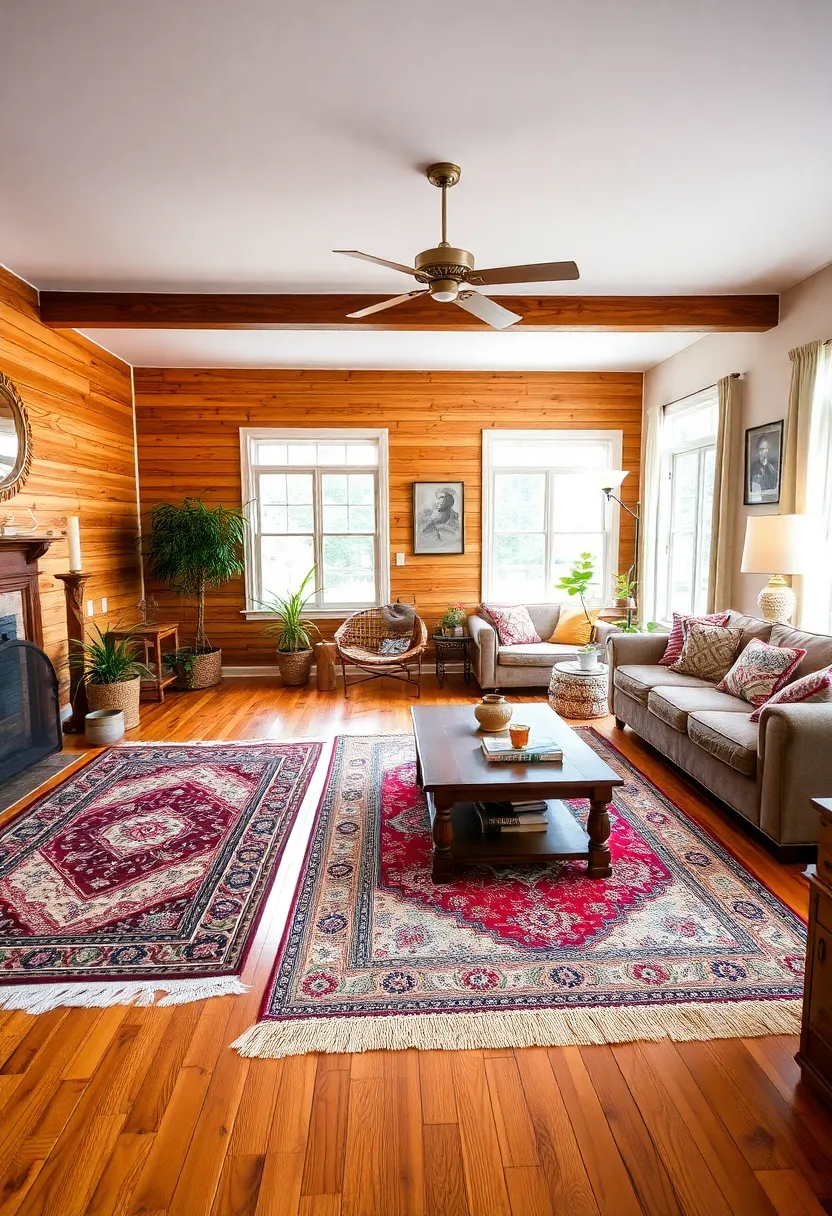
Wood flooring brings warmth and richness to any large living room. Opt for lighter shades of wood to maintain an airy feel while providing warmth underfoot. Adding area rugs can define spaces and enhance comfort on top of the flooring.
Choose durable finishes that can withstand daily use. Coordinate your flooring choice with your overall decor style for a cohesive look. Adding runners or area rugs can enhance warmth and style, making your space more inviting. Warm wood flooring can create a cozy foundation for your living room.
• Choose lighter wood shades for an airy feel.
• Add area rugs for warmth and comfort.
• Select durable finishes for lasting quality.
• Coordinate flooring with your overall decor style.
Warm wood flooring will enhance the inviting nature of your living room.
Warm Wood Flooring
Editor’s Choice

18 Sq. Ft Floor Tiles Peel and Stick Vinyl Floor 36 x 6 inch Luxury Self…
 Amazon$18.99
Amazon$18.99
5×7 Area Rug Living Room Rug: Washable Modern Abstract Soft Thin Rug Ind…
 Amazon$26.99
Amazon$26.99
Tried & True Original Wood Finish, 8 oz. – Linseed Oil & Beeswax Blend, …
 Amazon$24.99
Amazon$24.9928. Emphasize Natural Light

Emphasizing natural light can make your large living room feel bright and welcoming. Maximize window space by using light, airy curtains that allow sunlight to filter through. Mirrors can reflect light and create the illusion of a larger, brighter space.
Keep windows unobstructed for maximum brightness and use light colors for walls and furnishings to reflect light. Glass or translucent elements in your decor can also help enhance natural light. Emphasizing natural light will create an inviting atmosphere perfect for gatherings.
• Use light curtains to maximize natural light.
• Keep windows unobstructed for brightness.
• Incorporate mirrors to create a brighter space.
• Use light colors to reflect natural light.
Emphasizing natural light will make your living room feel spacious and inviting.
Emphasize Natural Light
Editor’s Choice

Brightown 300 LED Fairy Curtain Lights, 9.8ft x 9.8ft Warm White Curtain…
 Amazon$7.49
Amazon$7.49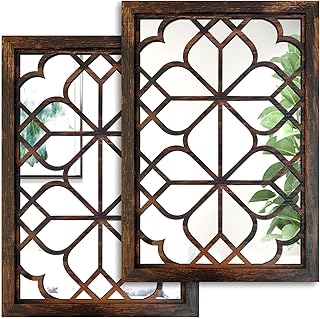
Wocred Set of 2 Rectangular Wall Mirror,Gorgeous Rustic Farmhouse Accent…
 Amazon$31.99
Amazon$31.99
K9 Crystal Glass Clear Cut Prisms, Translucent Decor for Home Hotel 60 8…
 Amazon$14.90
Amazon$14.9029. Multi-functional Furniture
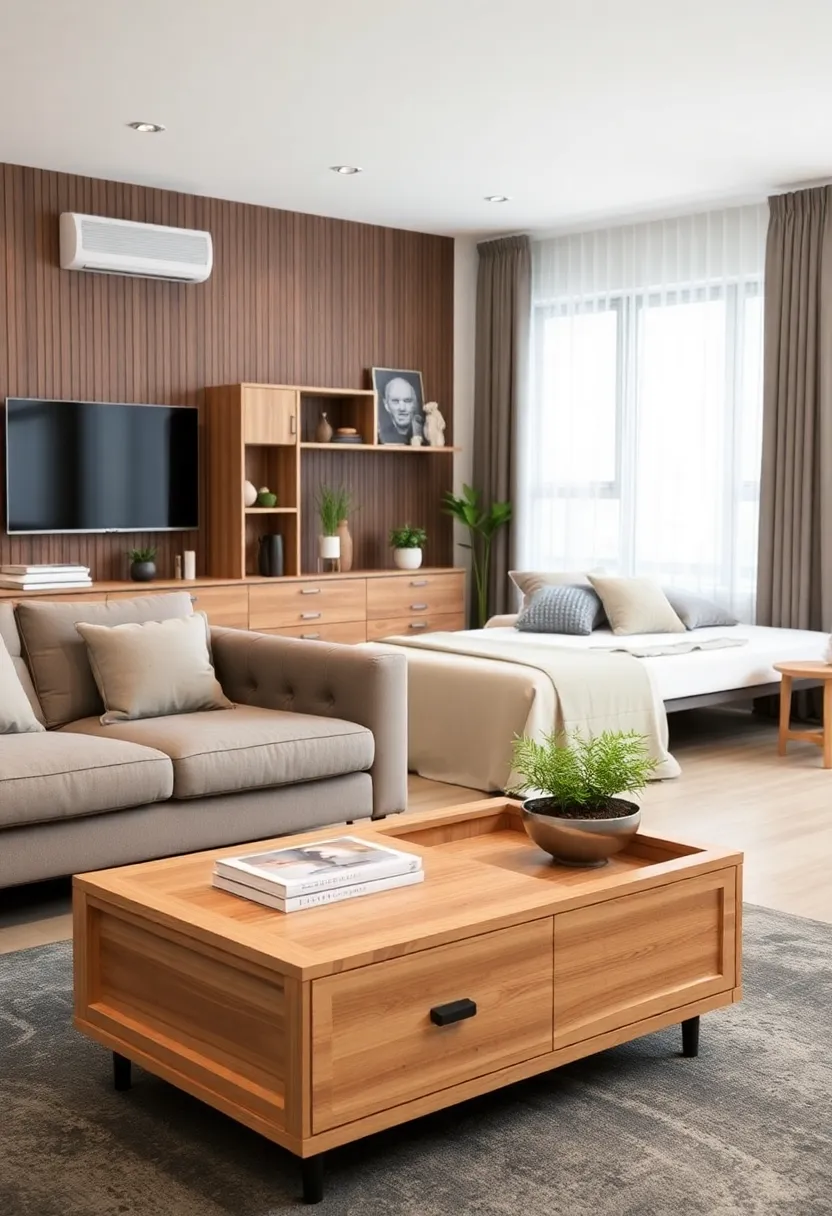
In a big living room, multi-functional furniture is a practical solution. Consider pieces that serve more than one purpose, like a coffee table with storage or a sofa bed for guests. These items help you maximize space while keeping the area organized.
Look for ottomans with hidden storage for blankets or magazines. A foldable dining table can be compact for daily use and expanded for gatherings. Benches can serve as seating or a table, adding versatility to your space. Multi-functional furniture can make your large living room feel more inviting and efficiently used.
• Choose furniture with multiple functions.
• Look for hidden storage options for tidiness.
• Use folding tables for versatility.
• Consider benches for seating or tables.
Multi-functional furniture will enhance the inviting nature of your living room.
Multi-functional Furniture
Editor’s Choice

SONGMICS MAZIE Collection – 43 Inches Folding Storage Ottoman Bench, Ott…
 Amazon$49.99
Amazon$49.99
Folding Table 6ft Portable Heavy Duty Plastic Fold-in-Half Utility Folda…
 Amazon$77.39
Amazon$77.39
Marcy Flat Utility Weight Bench for Home Gym Weight Training and Ab Exer…
 Amazon$95.99
Amazon$95.9930. Celebrate Artistic Expression
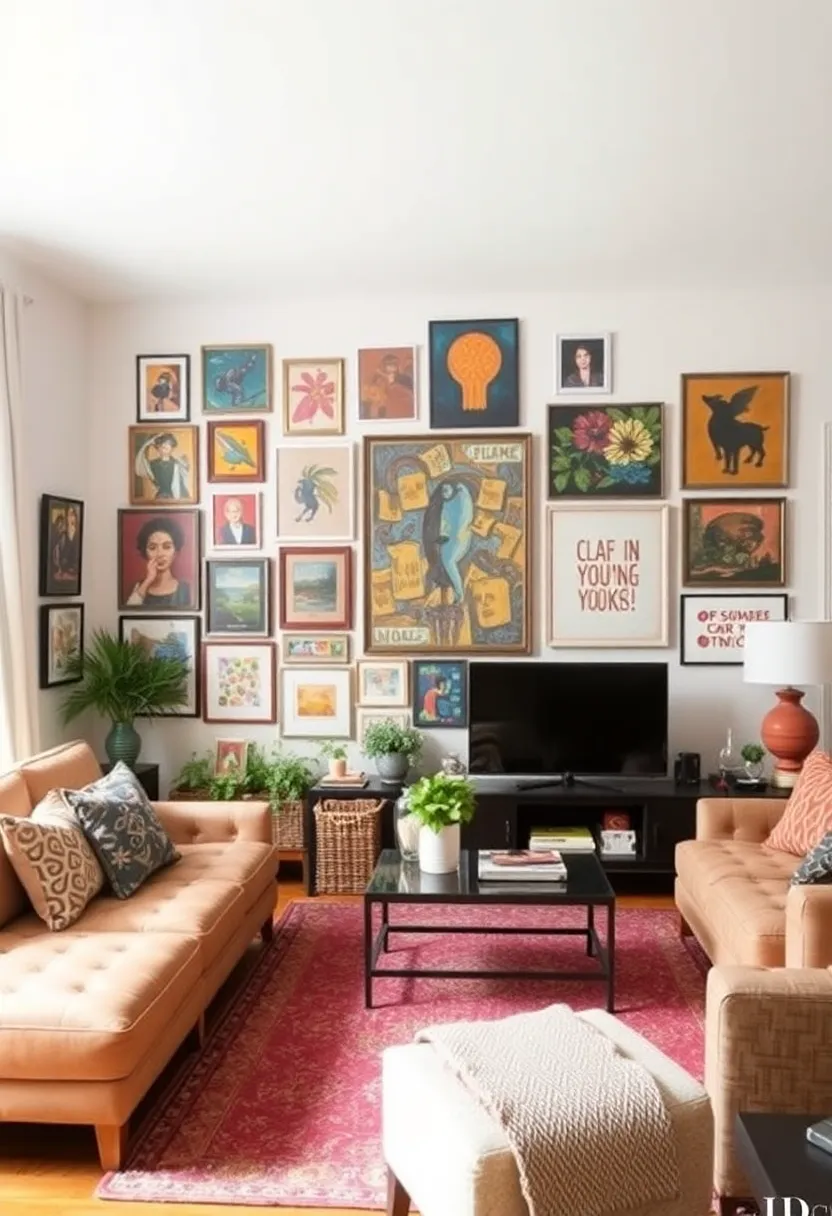
Celebrating artistic expression in your living room can create a unique, inviting space that reflects your personality. Incorporate art pieces from local artists or DIY projects that resonate with your style. Display these works prominently to showcase your creative side and make a statement.
Create a dedicated art wall showcasing various works to draw attention. Use vibrant colors or abstract designs to create a focal point that inspires. Mixing different art styles can add an eclectic feel to your space. By celebrating artistic expression, your living room can become a cozy, inviting sanctuary filled with inspiration.
• Create an art wall for visual interest.
• Use vibrant colors for a focal point.
• Mix different art styles for an eclectic feel.
• Display pieces that reflect your personality.
Celebrating artistic expression will make your living room feel cozy and inviting.
Celebrate Artistic Expression
Editor’s Choice

97 Decor Eclectic FRAMED Wall Art Set – Colorful Eclectic Decor, Retro C…
 Amazon$69.99
Amazon$69.99
Multicolored Rainbow Abstract Throw Pillow Covers 18×18 in Set of 2, Dec…
 Amazon$9.99
Amazon$9.99
Dan&Darci Arts and Crafts Vault – Craft Supplies Kit in a Box – Christma…
 Amazon$34.99
Amazon$34.99Conclusion
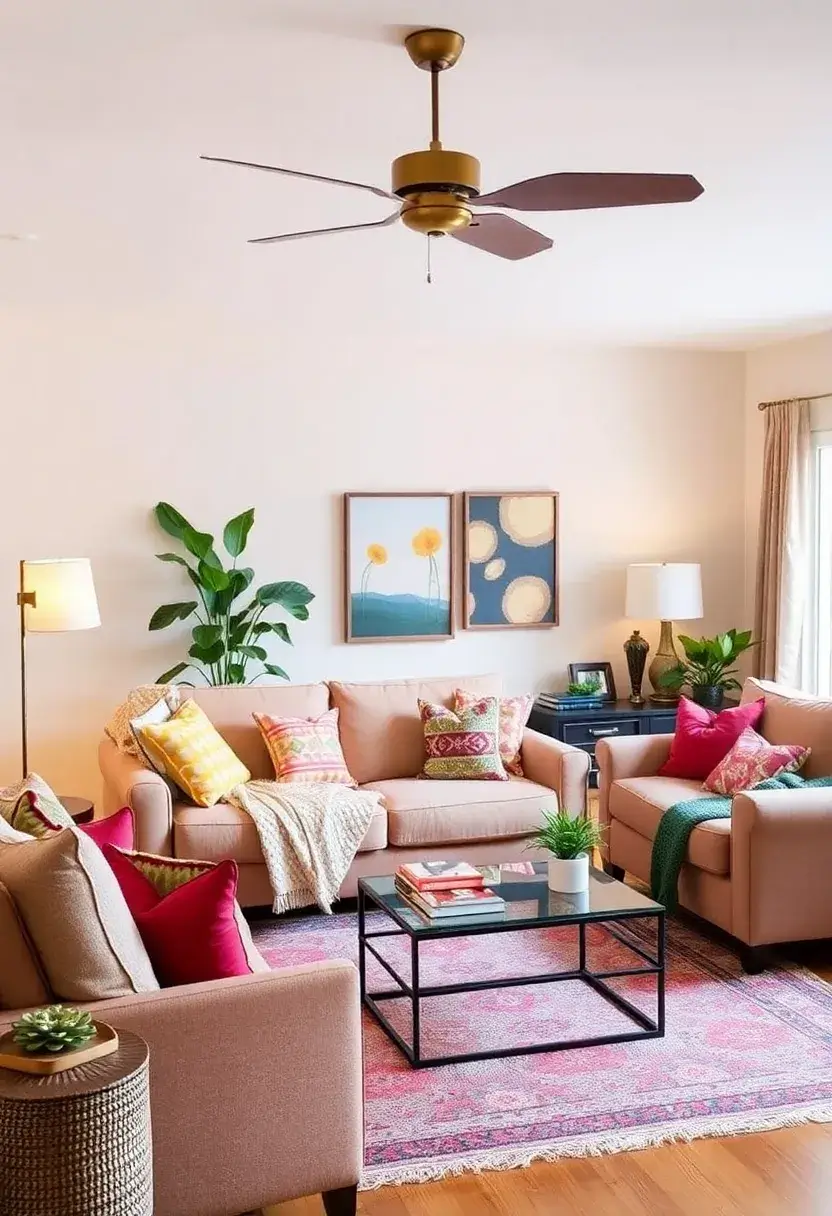
Transforming your big living room into a warm and inviting haven is all about expressing your personal style and creativity.
From playful decor to cozy seating arrangements, every detail counts in making the space feel welcoming.
Remember to take your time, experiment, and enjoy the process of creating a space that feels just right for you and your loved ones.
With these ideas, your spacious living room can become a cozy retreat where memories are made.
Note: We aim to provide accurate product links, but some may occasionally expire or become unavailable. If this happens, please search directly on Amazon for the product or a suitable alternative.
This post contains Amazon affiliate links, meaning we may earn a small commission if you purchase through our links, at no extra cost to you.
Frequently Asked Questions
What Are Some Creative Ideas for Big Living Rooms to Make Them Feel Warm and Inviting?
Transforming your big living room into a cozy haven is easier than you think! Start by incorporating a mix of warm color palettes, like earthy tones or soft pastels, to create a welcoming atmosphere. Layering textures with plush throw blankets and cushions can add depth and comfort to your space.
Consider dividing the room into functional zones with rugs, creating intimate seating arrangements that encourage conversation. Don’t forget to add plants for a touch of nature and warmth!
How Can I Choose Comfortable Furniture Arrangements for My Spacious Living Room?
Choosing the right furniture arrangement can make a world of difference in a large space! Aim for a layout that promotes flow and conversation. For example, place sofas and chairs in a U-shape or around a focal point like a fireplace or coffee table.
Mix different seating styles, such as a cozy sectional with accent chairs, to create an inviting feel. Use ottomans or poufs as flexible seating options that can be moved around easily, making your living room both functional and stylish!
What Are Some Bohemian-Inspired Decor Tips for Large Living Rooms?
Bohemian-inspired decor is perfect for adding character to spacious living rooms! Start by layering various patterns and textures—think vibrant rugs, eclectic wall art, and an array of cushions.
Incorporate natural materials like wood, jute, and rattan, and don’t shy away from bold colors! String lights or macramé hangings can add a whimsical touch. Remember, the key to bohemian style is to embrace individuality and create a space that reflects your personality!
What Types of Lighting Work Best for Creating a Cozy Atmosphere in a Big Living Room?
Lighting plays a crucial role in making a large living room feel cozy and inviting. Opt for a combination of ambient, task, and accent lighting to set the mood. Use floor lamps and table lamps with warm bulbs to create a soft glow, and consider adding dimmers for versatility.
Incorporate statement chandeliers or pendant lights to draw the eye upwards while maintaining that warm vibe. Don’t forget to use candles or fairy lights for an extra touch of charm!
How Do I Select a Warm Color Palette for My Spacious Living Room?
Choosing a warm color palette can significantly enhance the coziness of your big living room. Start with neutral base colors like beige or soft gray, then add warm accent colors such as terracotta, mustard yellow, or deep rust.
Consider using these colors on your walls, furniture, or accessories like curtains and cushions. A cohesive color scheme helps bind the space together, making it feel more intimate and inviting. Don’t hesitate to experiment with different shades to find what resonates with your style!
Related Topics
home decor
bohemian style
cozy living room decor
large space design
inviting living room
warm color palettes
comfortable furniture
spacious layouts
decorating tips
DIY decor
modern boho
easy updates
Note: We aim to provide accurate product links, but some may occasionally expire or become unavailable. If this happens, please search directly on Amazon for the product or a suitable alternative.
This post contains Amazon affiliate links, meaning we may earn a small commission if you purchase through our links, at no extra cost to you.
Frequently Asked Questions
What Are Some Creative Ideas for Big Living Rooms to Make Them Feel Warm and Inviting?
Transforming your big living room into a cozy haven is easier than you think! Start by incorporating a mix of warm color palettes, like earthy tones or soft pastels, to create a welcoming atmosphere. Layering textures with plush throw blankets and cushions can add depth and comfort to your space.
Consider dividing the room into functional zones with rugs, creating intimate seating arrangements that encourage conversation. Don’t forget to add plants for a touch of nature and warmth!
How Can I Choose Comfortable Furniture Arrangements for My Spacious Living Room?
Choosing the right furniture arrangement can make a world of difference in a large space! Aim for a layout that promotes flow and conversation. For example, place sofas and chairs in a U-shape or around a focal point like a fireplace or coffee table.
Mix different seating styles, such as a cozy sectional with accent chairs, to create an inviting feel. Use ottomans or poufs as flexible seating options that can be moved around easily, making your living room both functional and stylish!
What Are Some Bohemian-Inspired Decor Tips for Large Living Rooms?
Bohemian-inspired decor is perfect for adding character to spacious living rooms! Start by layering various patterns and textures—think vibrant rugs, eclectic wall art, and an array of cushions.
Incorporate natural materials like wood, jute, and rattan, and don’t shy away from bold colors! String lights or macramé hangings can add a whimsical touch. Remember, the key to bohemian style is to embrace individuality and create a space that reflects your personality!
What Types of Lighting Work Best for Creating a Cozy Atmosphere in a Big Living Room?
Lighting plays a crucial role in making a large living room feel cozy and inviting. Opt for a combination of ambient, task, and accent lighting to set the mood. Use floor lamps and table lamps with warm bulbs to create a soft glow, and consider adding dimmers for versatility.
Incorporate statement chandeliers or pendant lights to draw the eye upwards while maintaining that warm vibe. Don’t forget to use candles or fairy lights for an extra touch of charm!
How Do I Select a Warm Color Palette for My Spacious Living Room?
Choosing a warm color palette can significantly enhance the coziness of your big living room. Start with neutral base colors like beige or soft gray, then add warm accent colors such as terracotta, mustard yellow, or deep rust.
Consider using these colors on your walls, furniture, or accessories like curtains and cushions. A cohesive color scheme helps bind the space together, making it feel more intimate and inviting. Don’t hesitate to experiment with different shades to find what resonates with your style!
Related Topics
home decor
bohemian style
cozy living room decor
large space design
inviting living room
warm color palettes
comfortable furniture
spacious layouts
decorating tips
DIY decor
modern boho
easy updates

